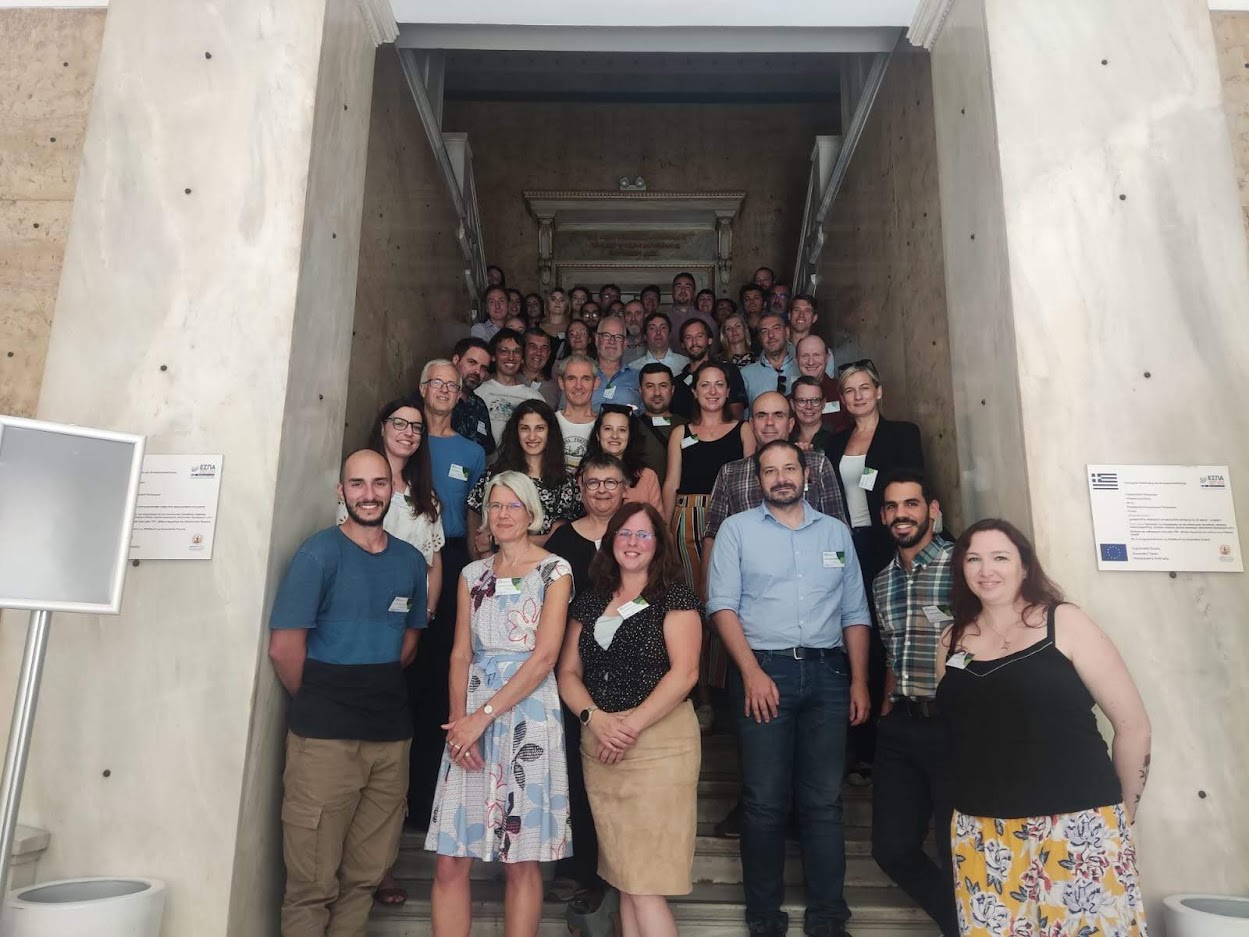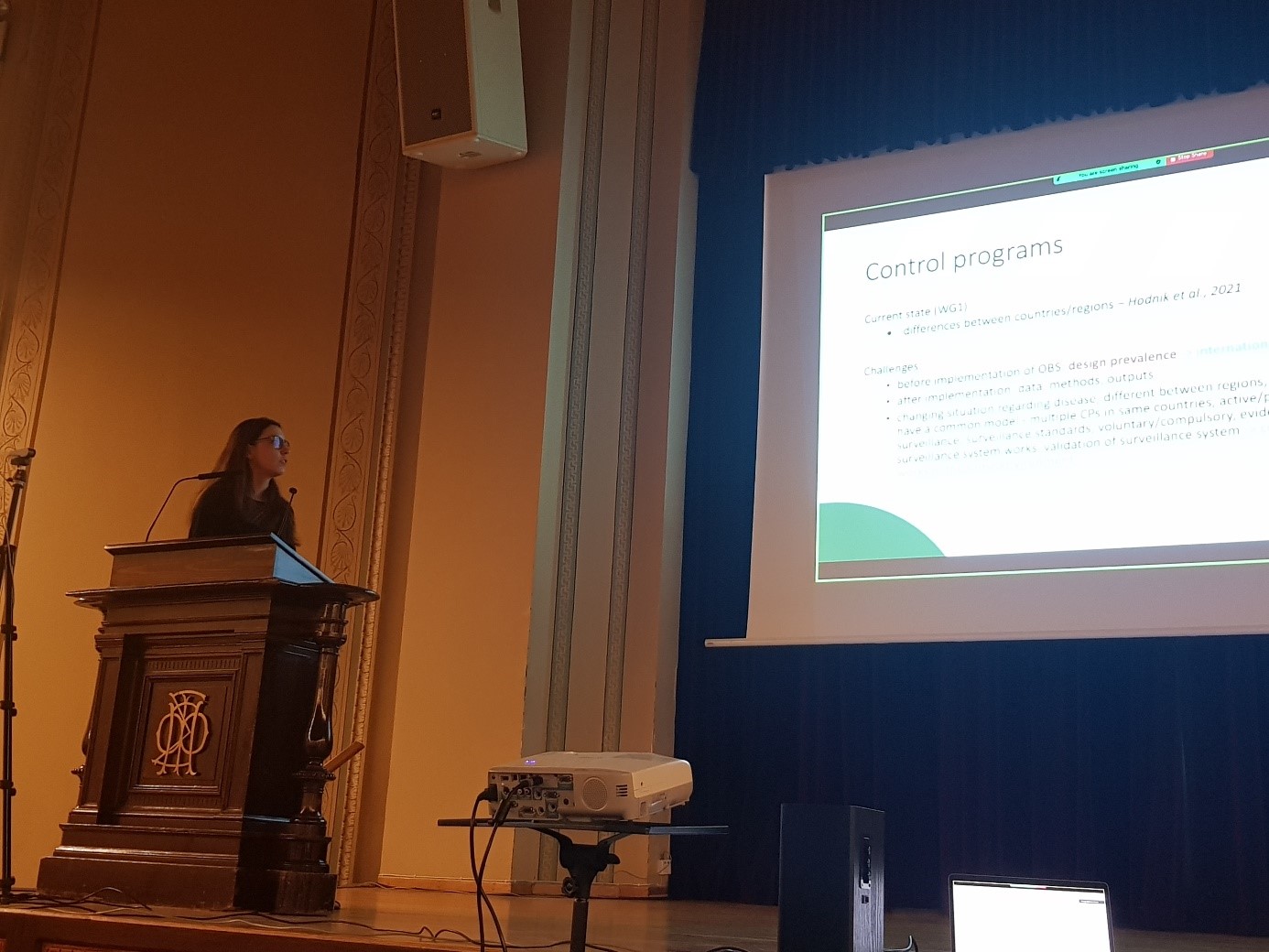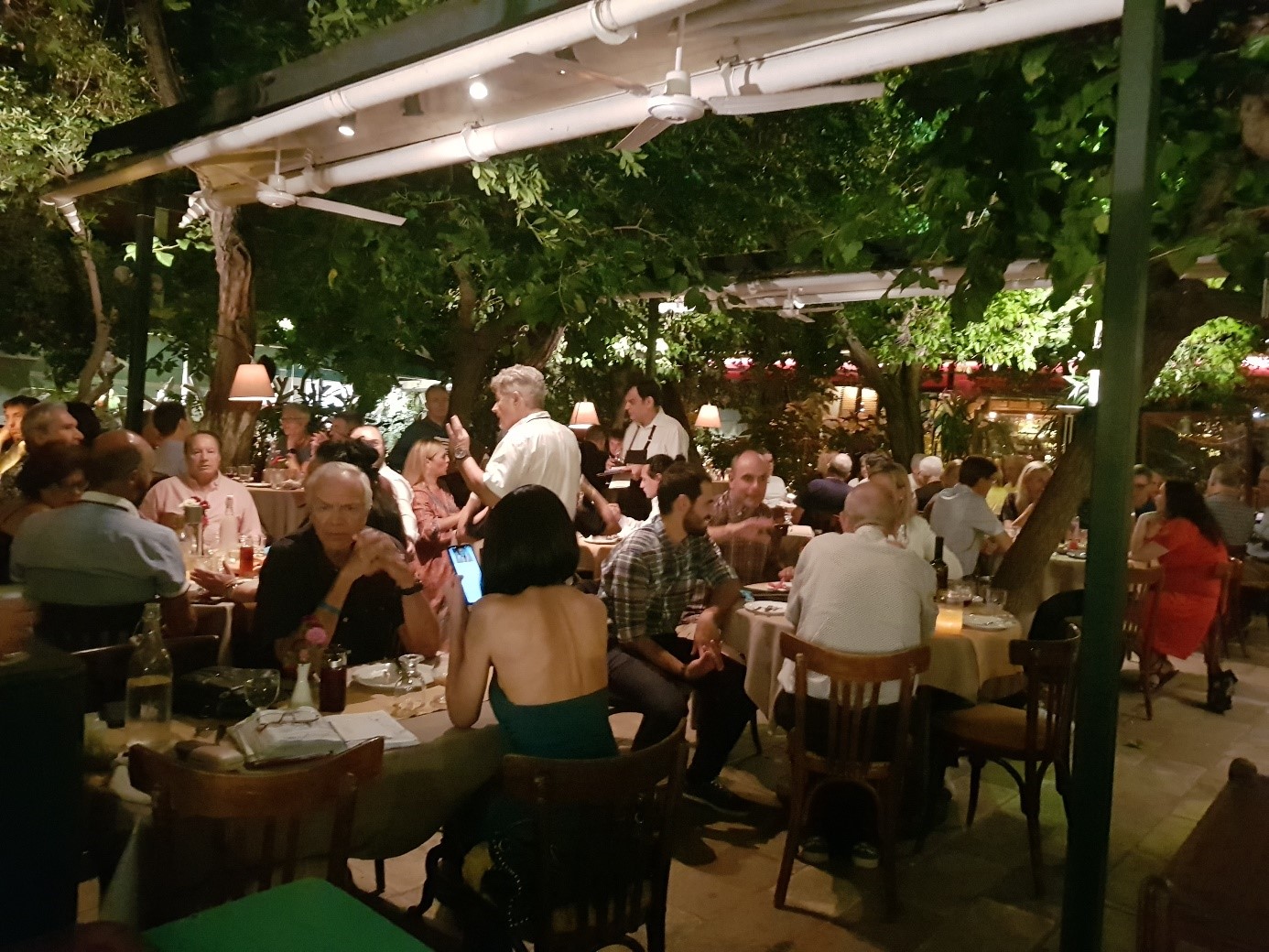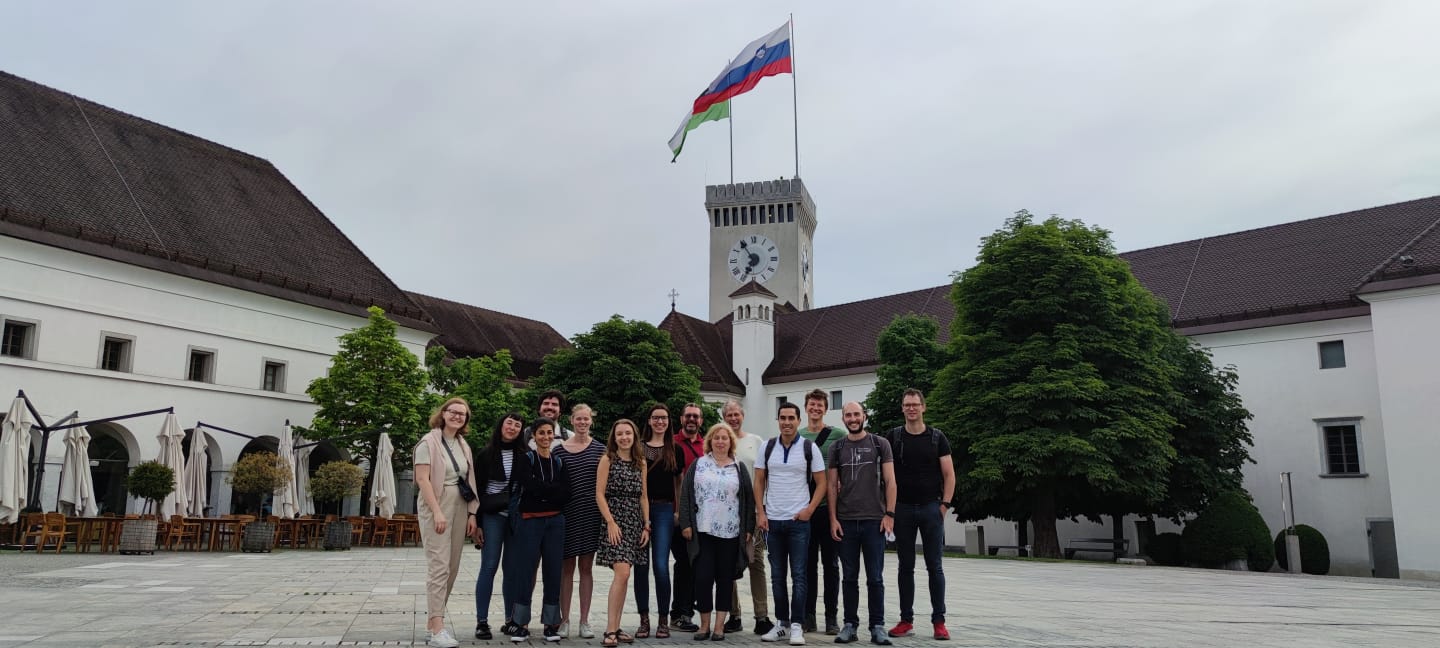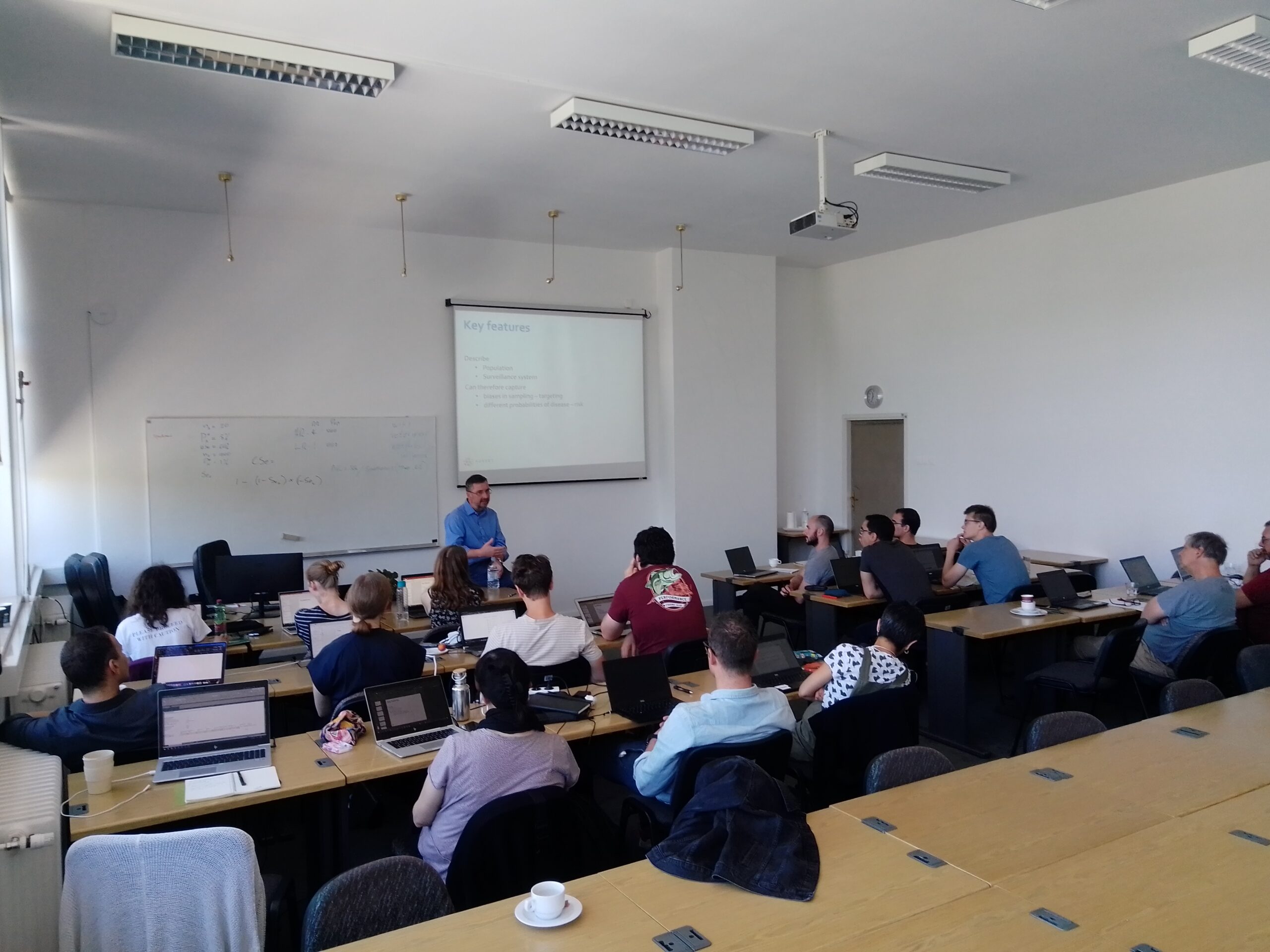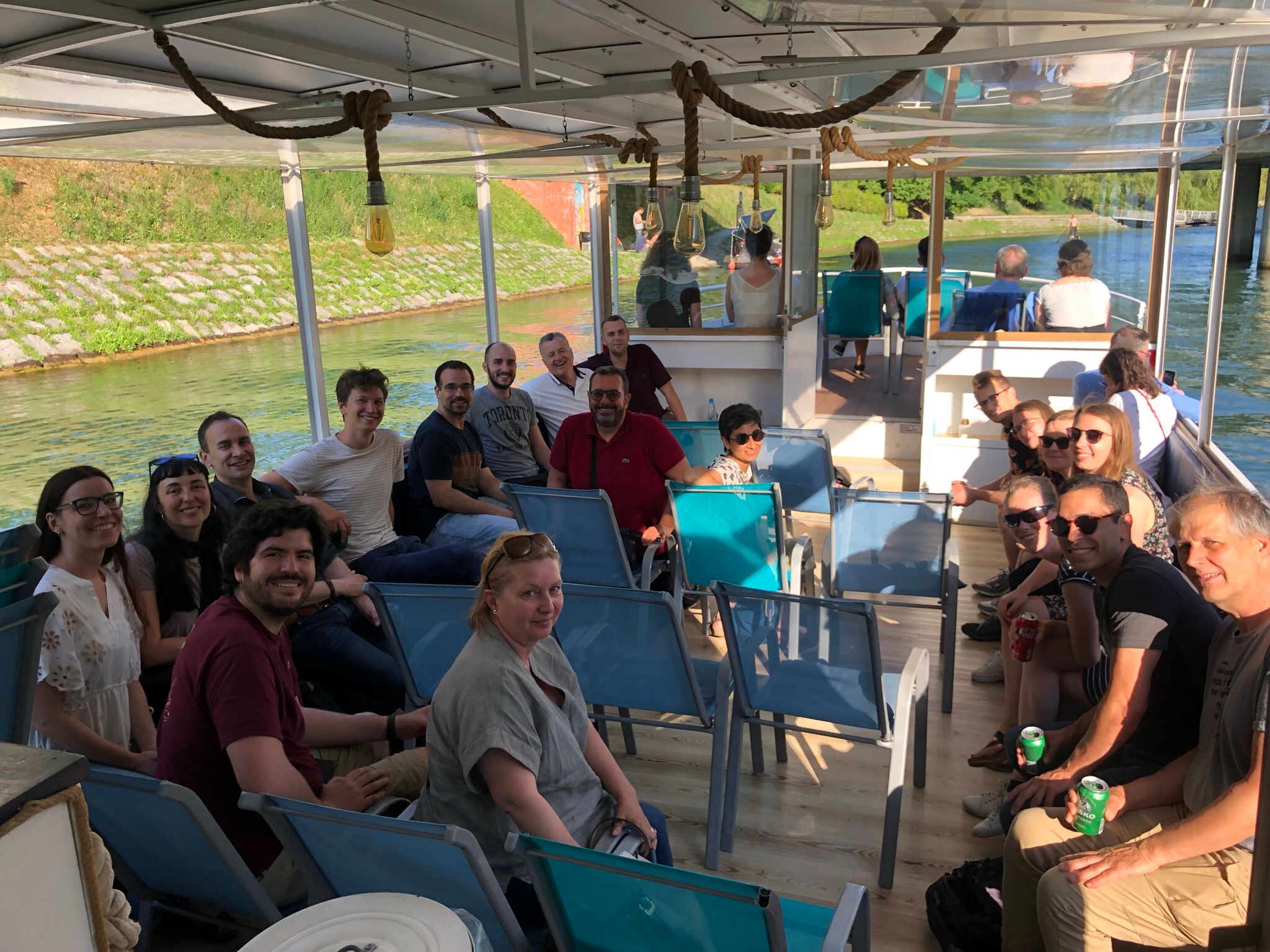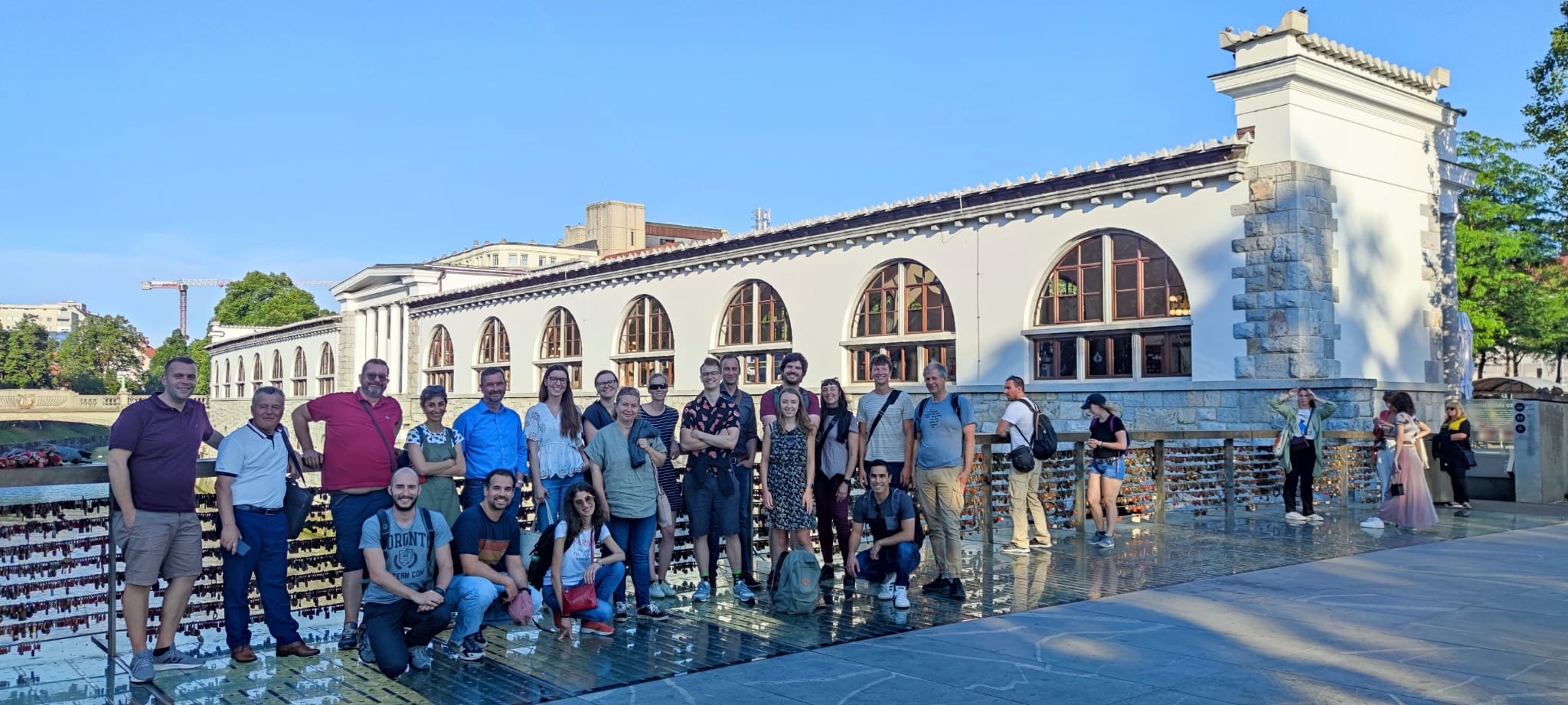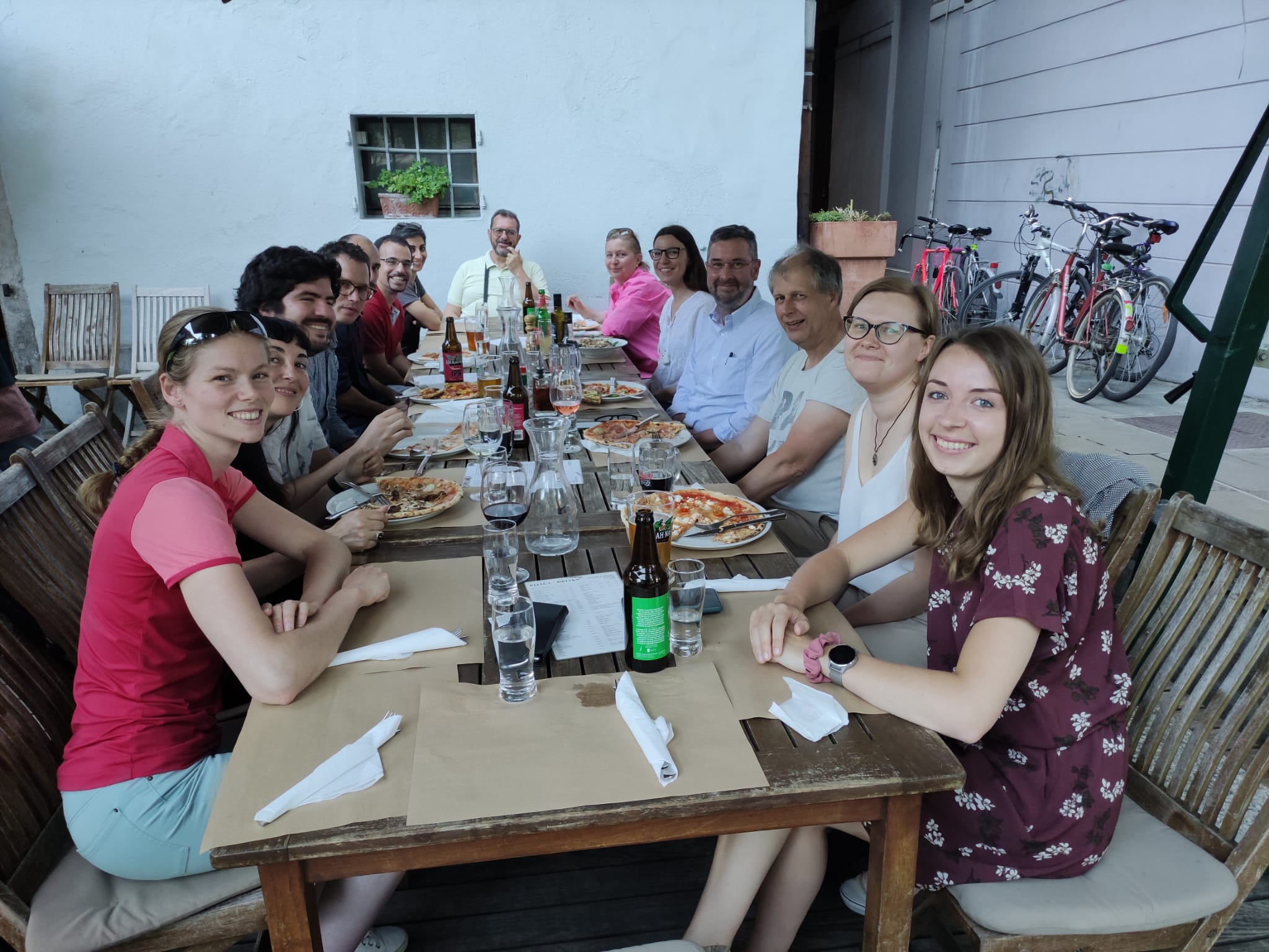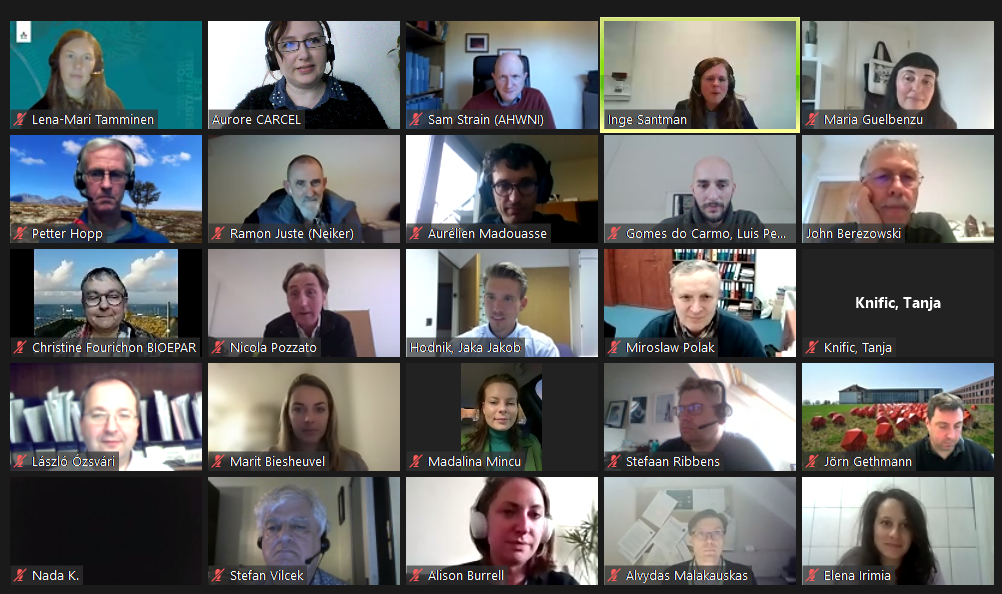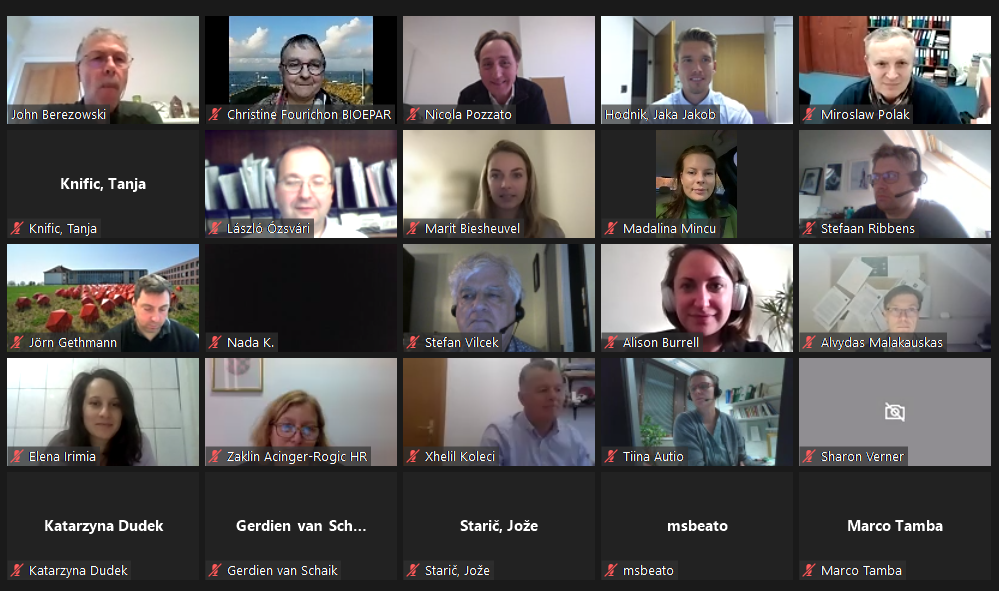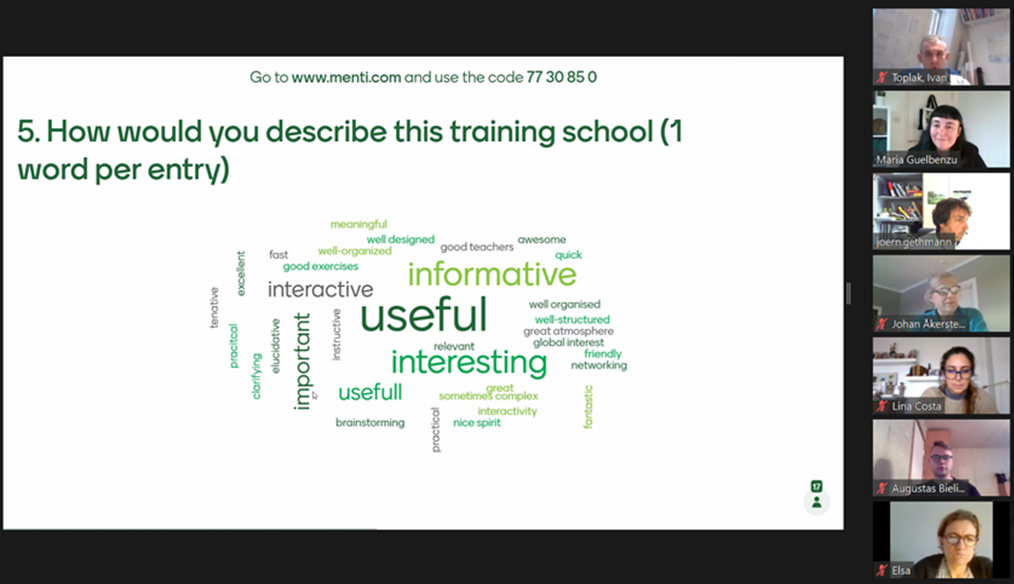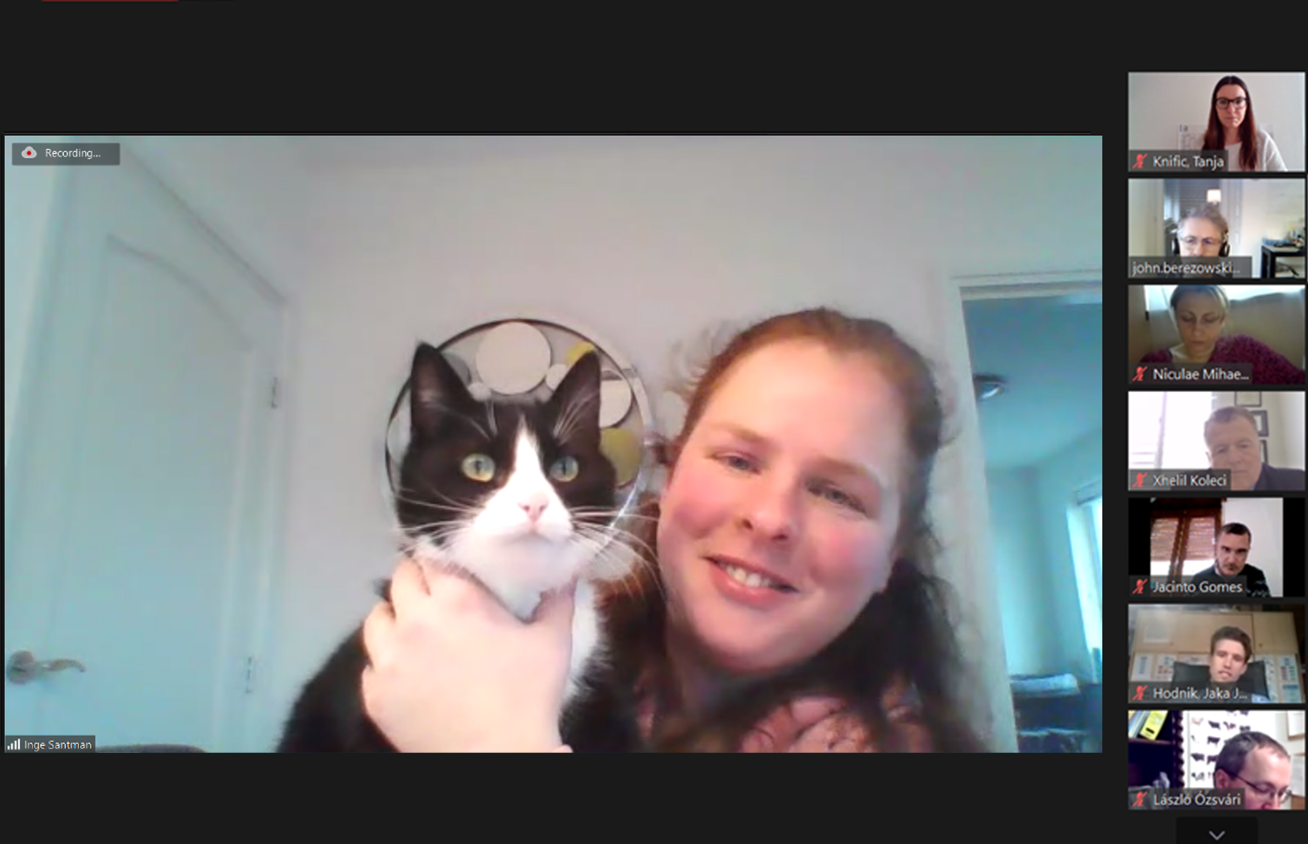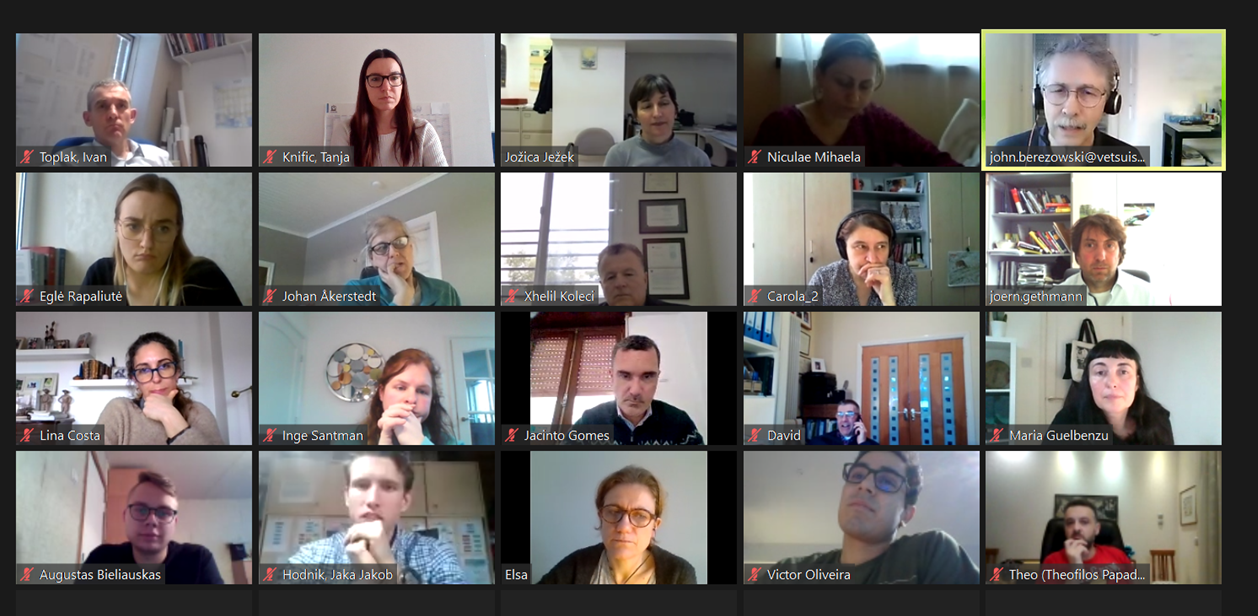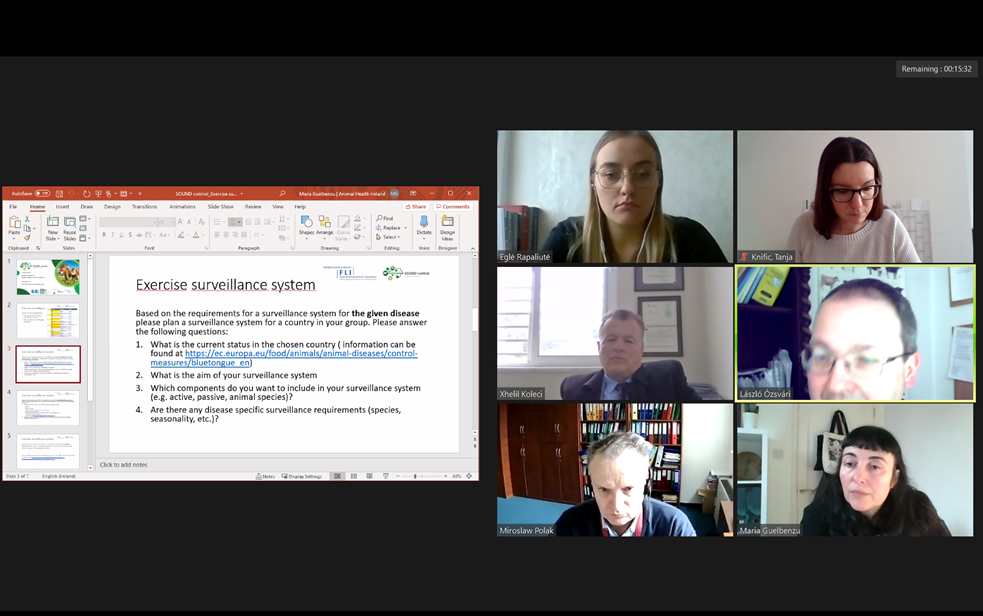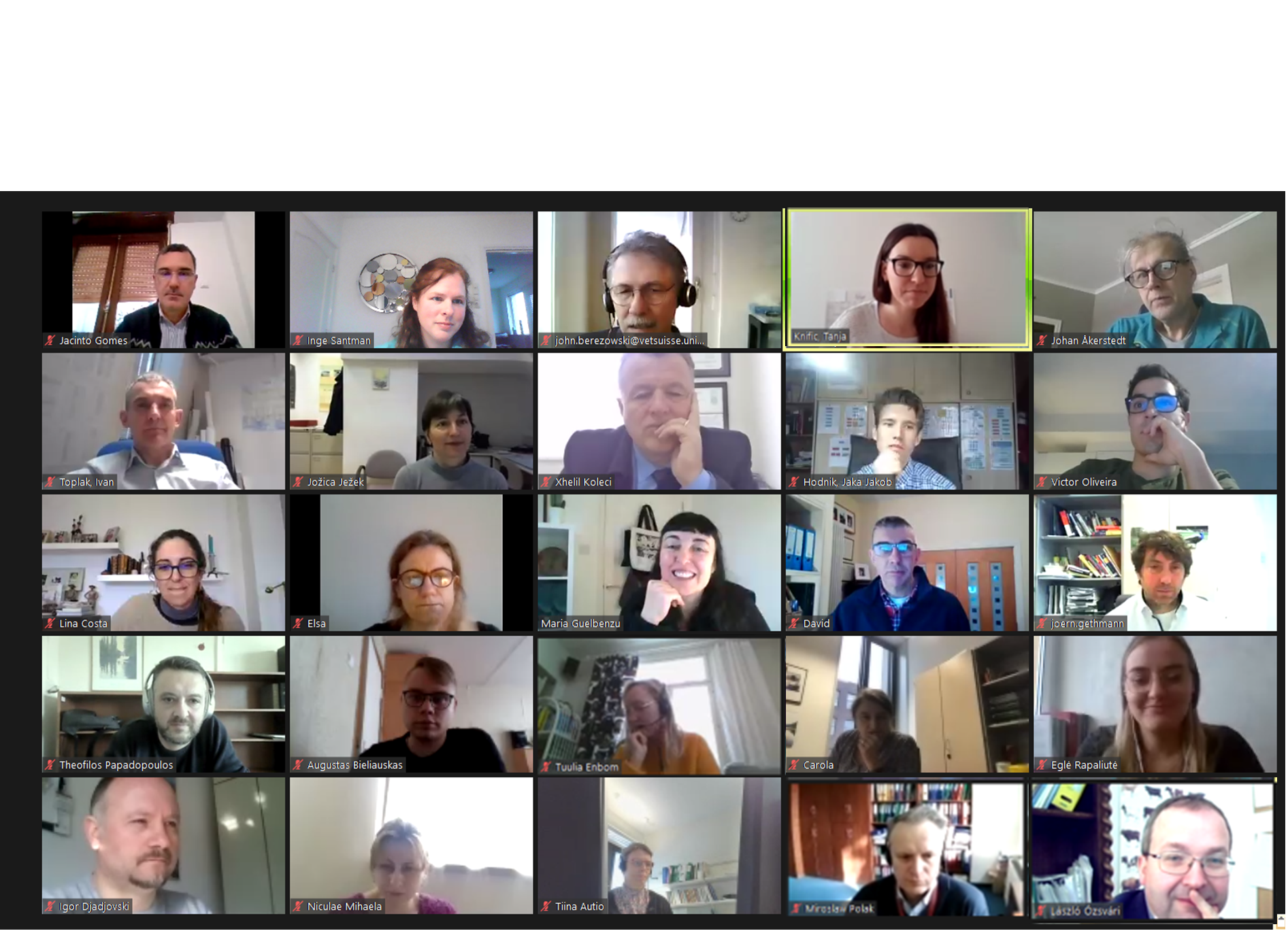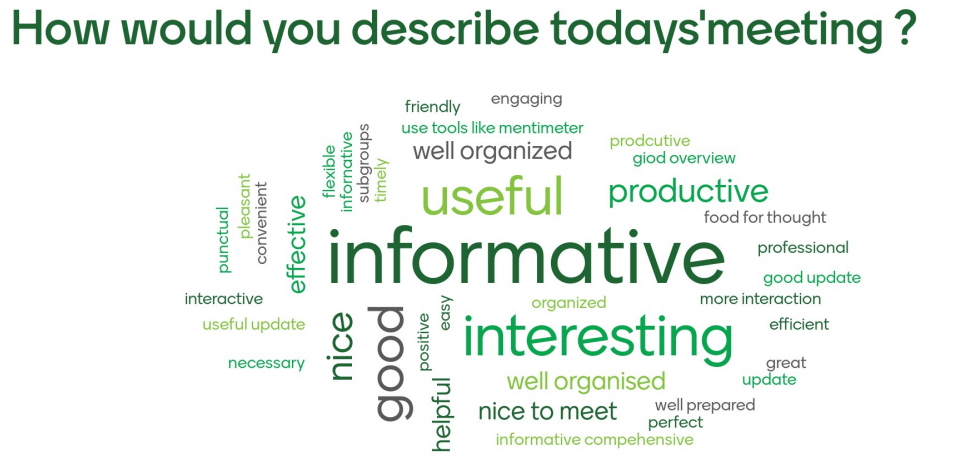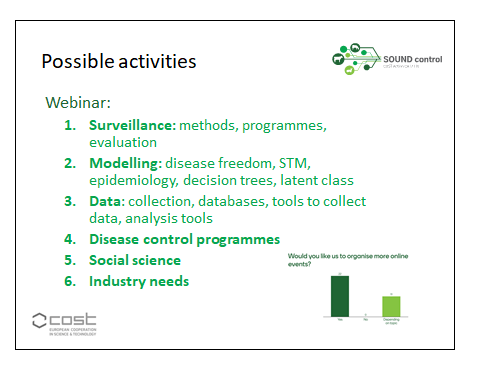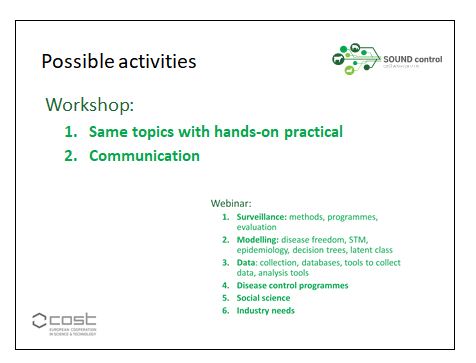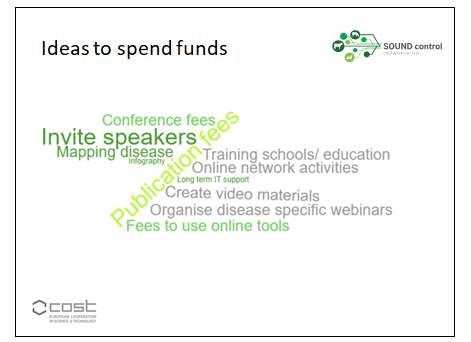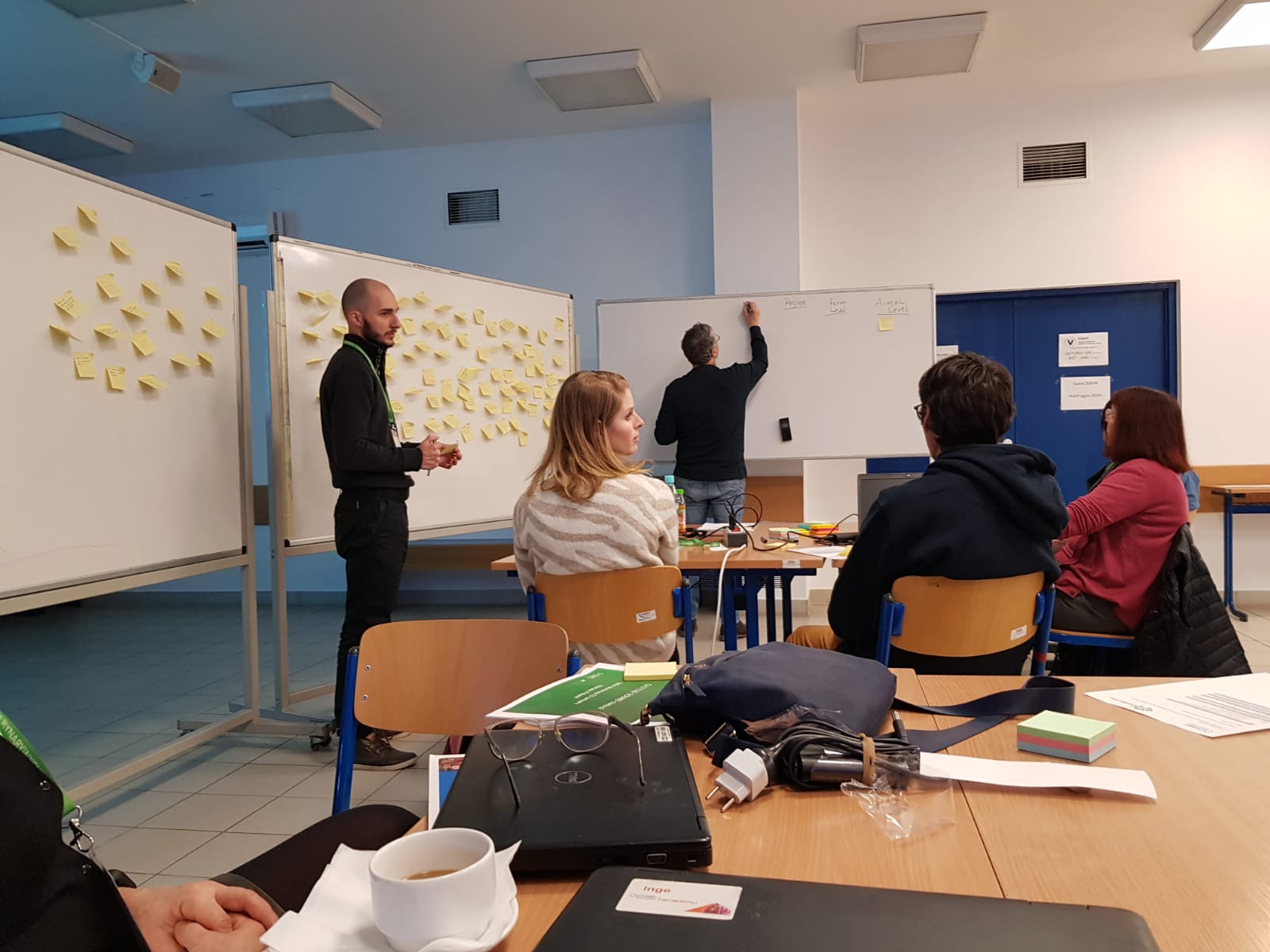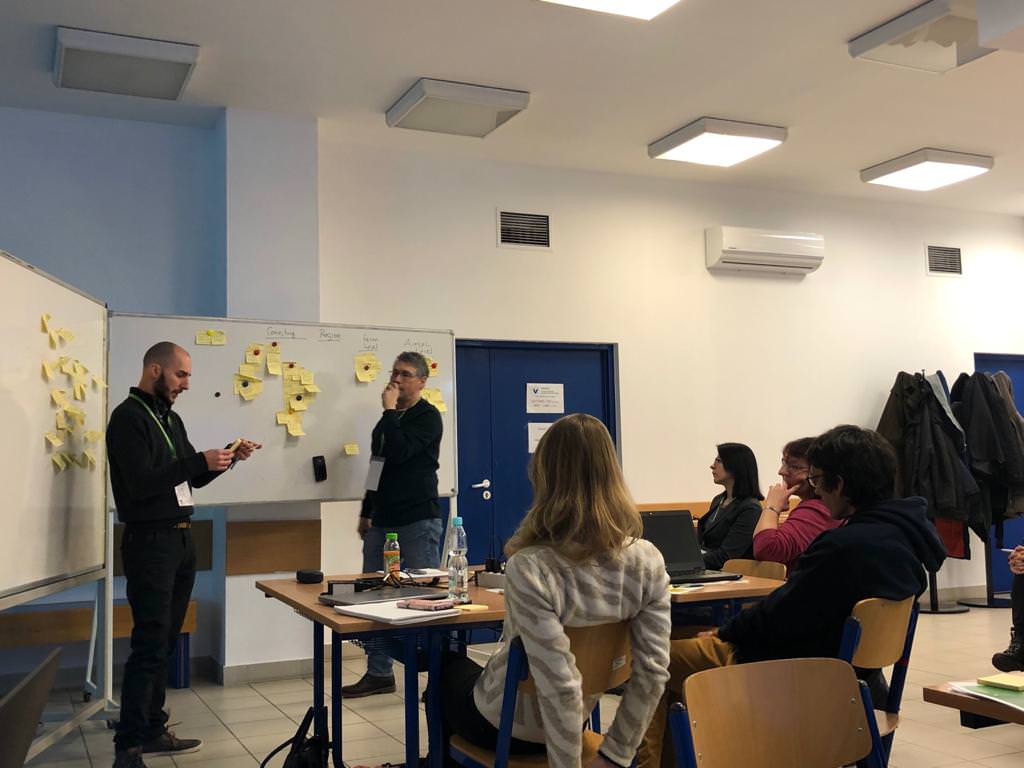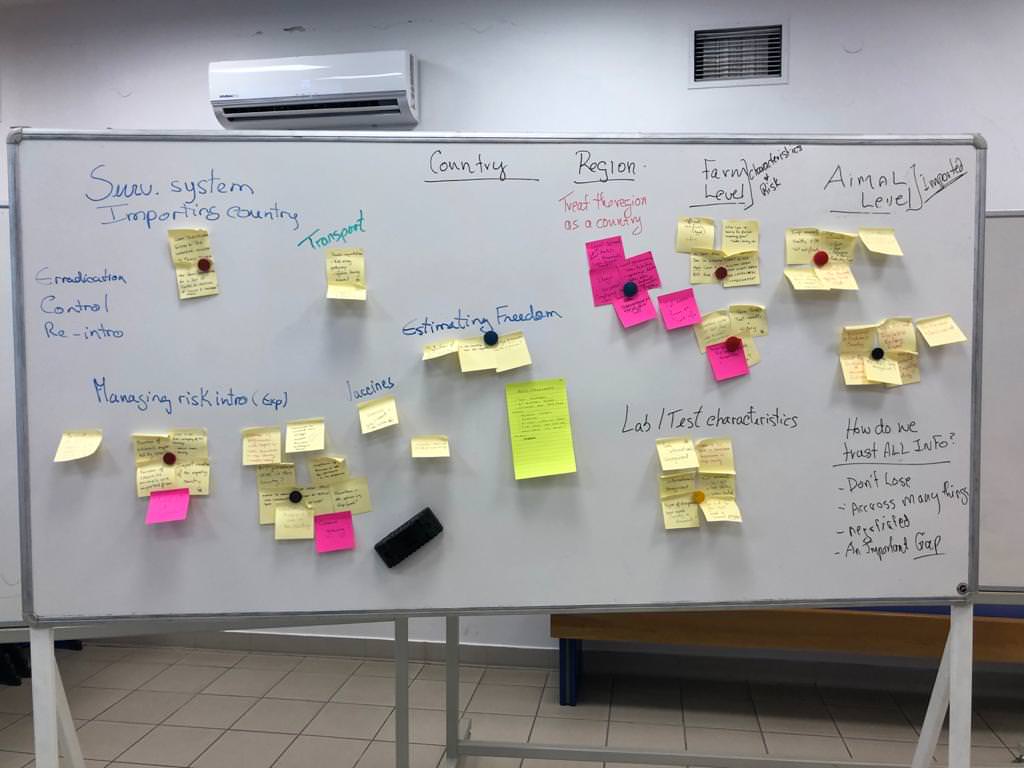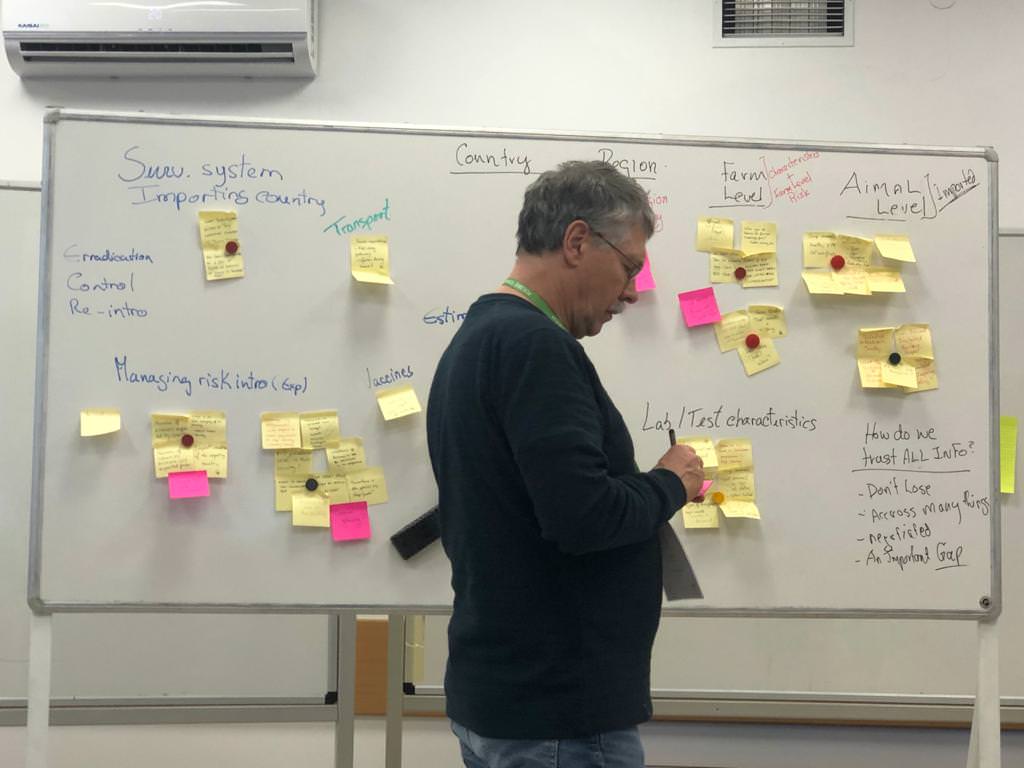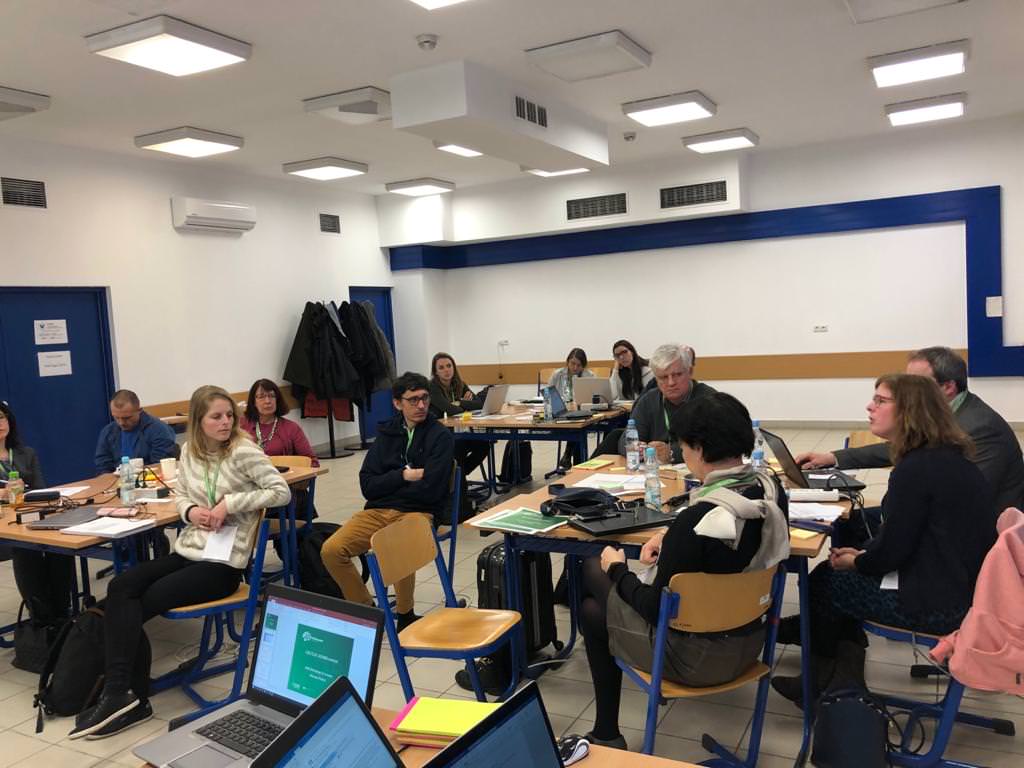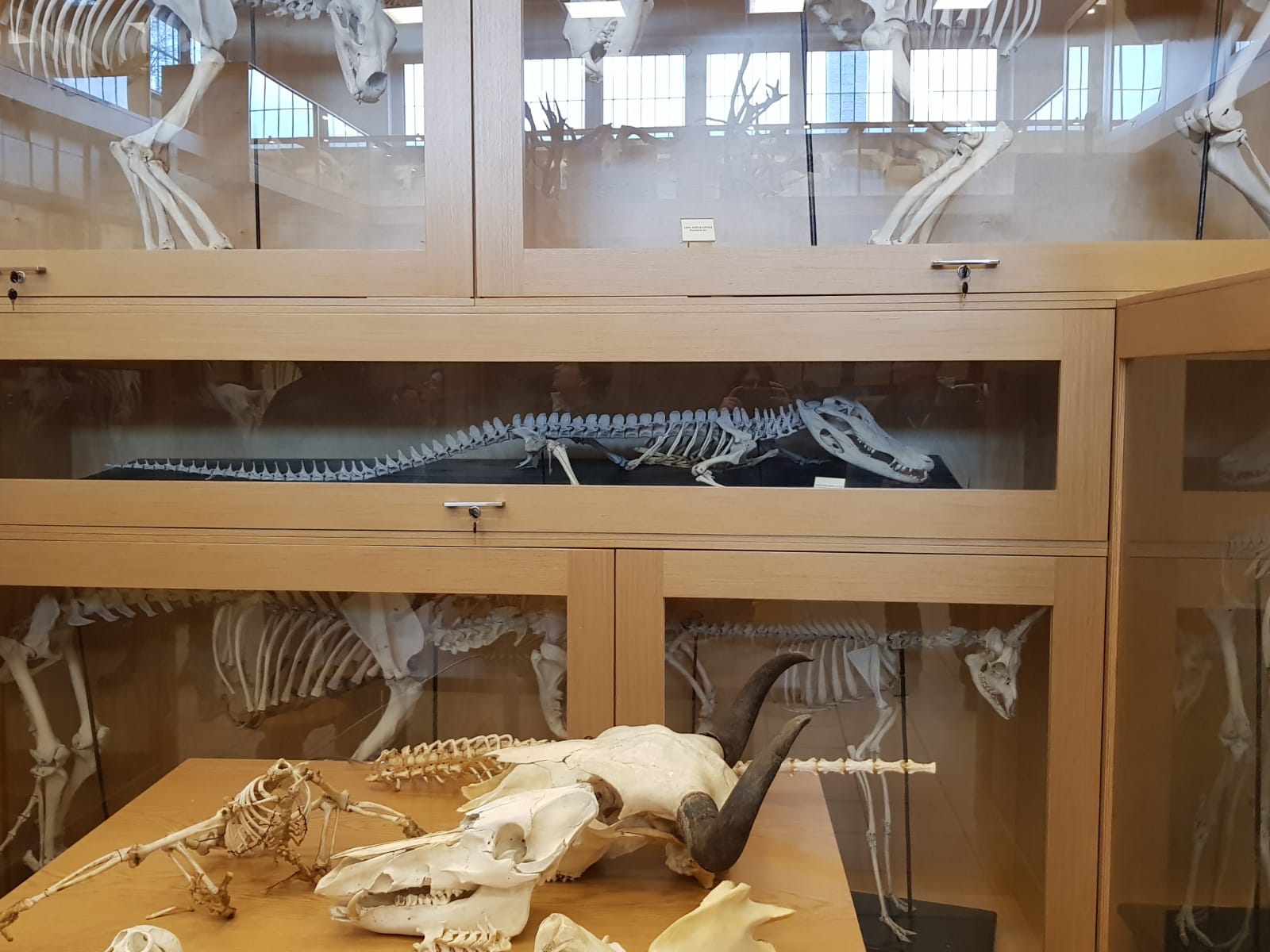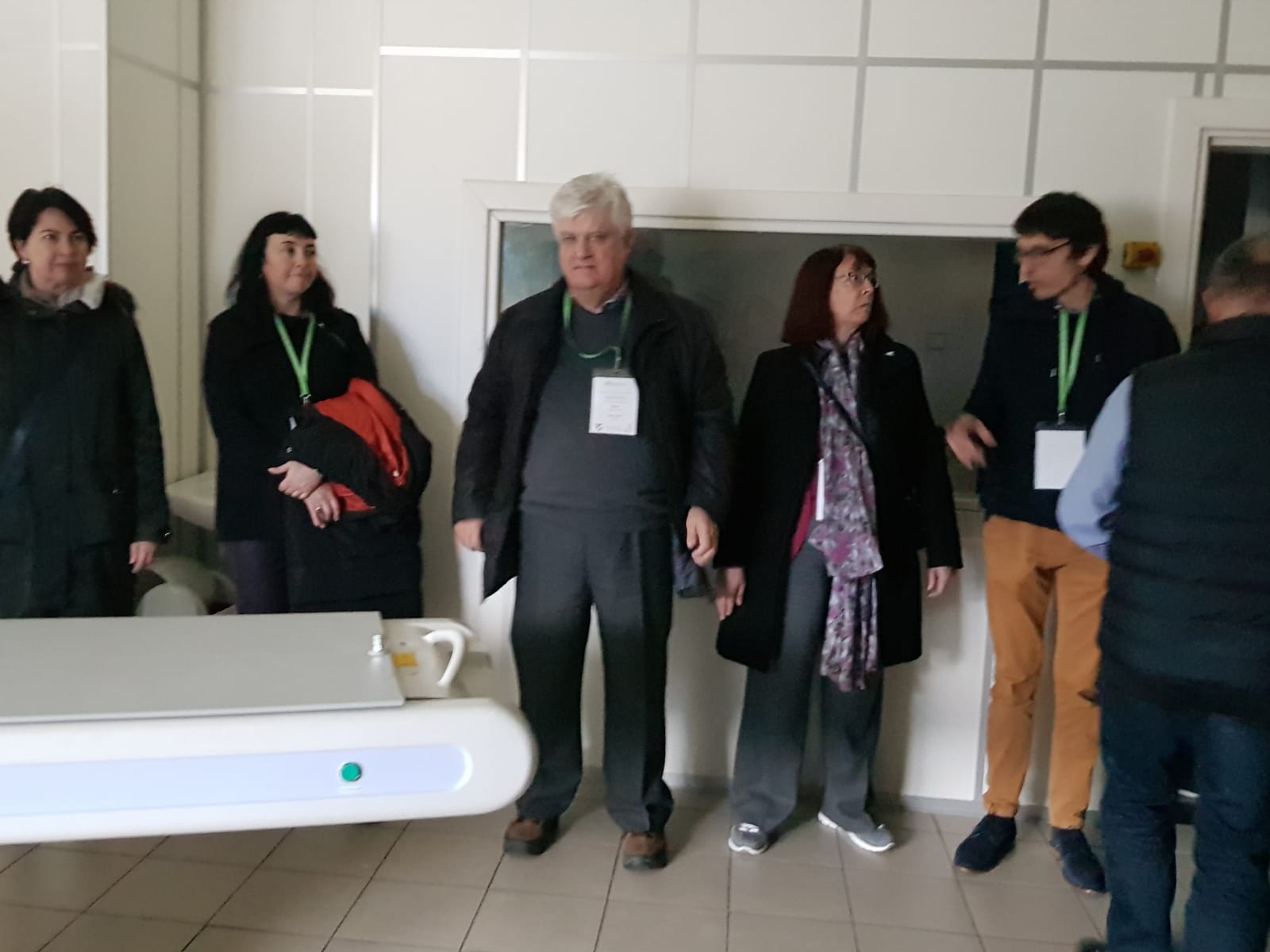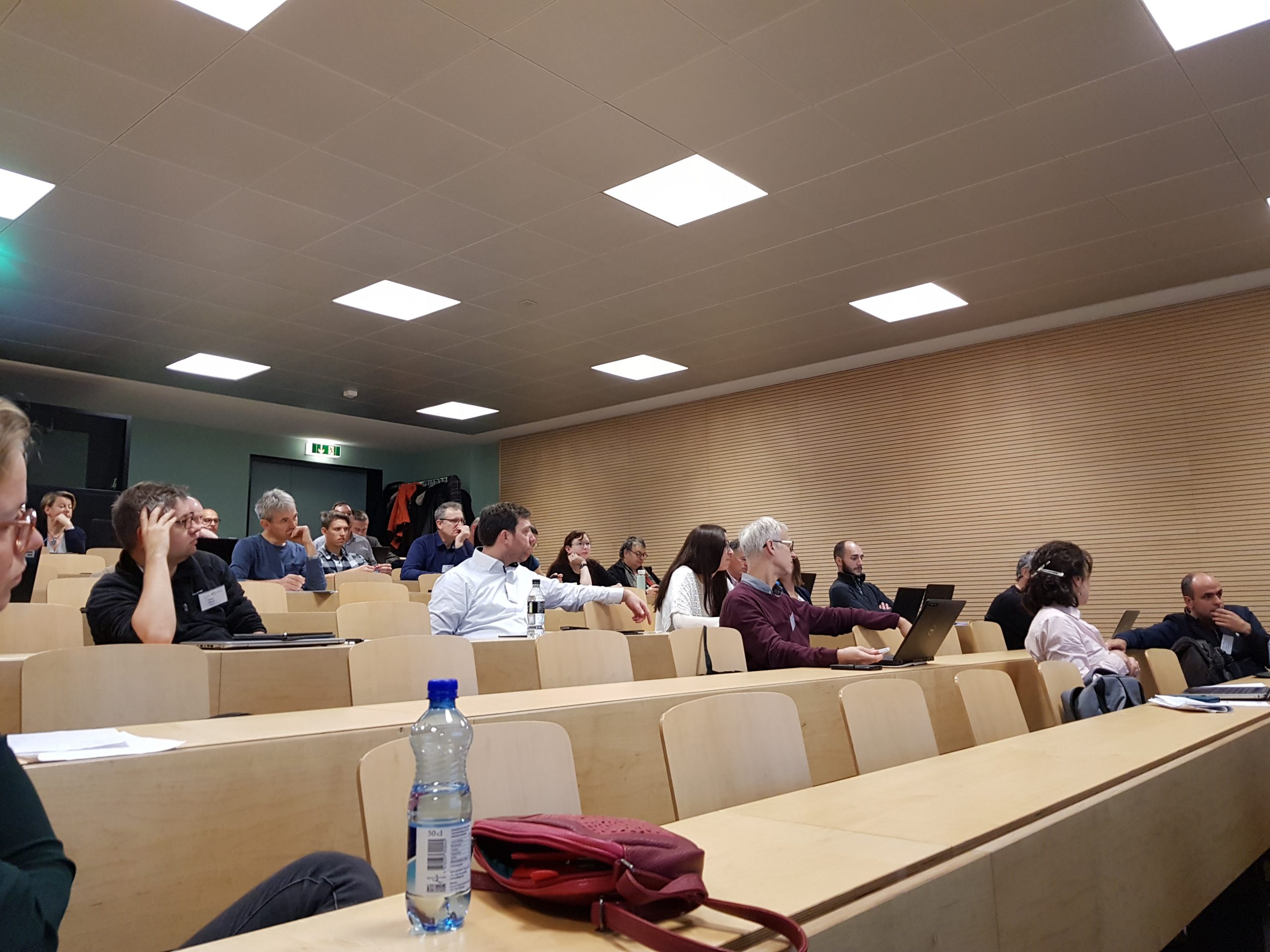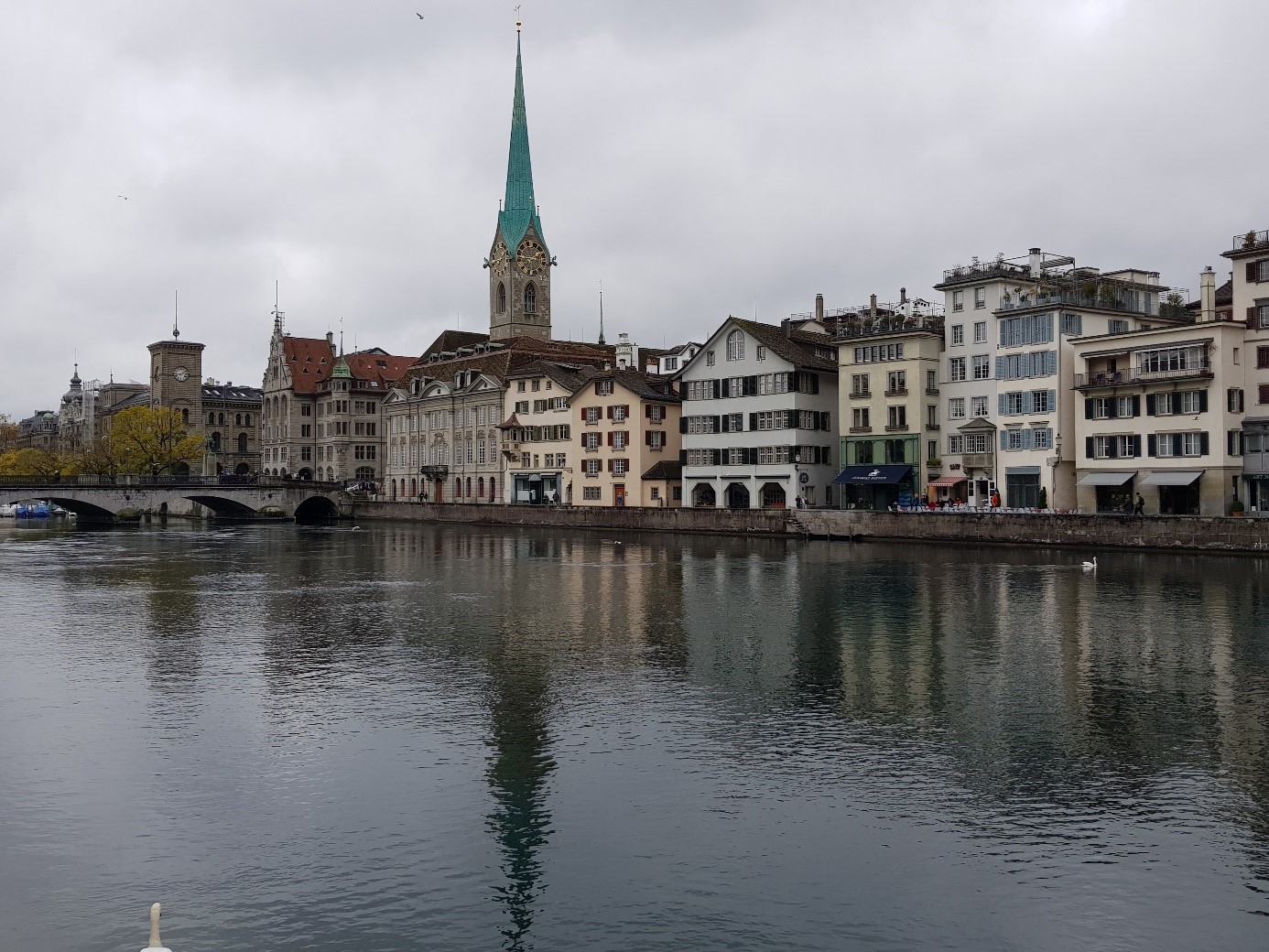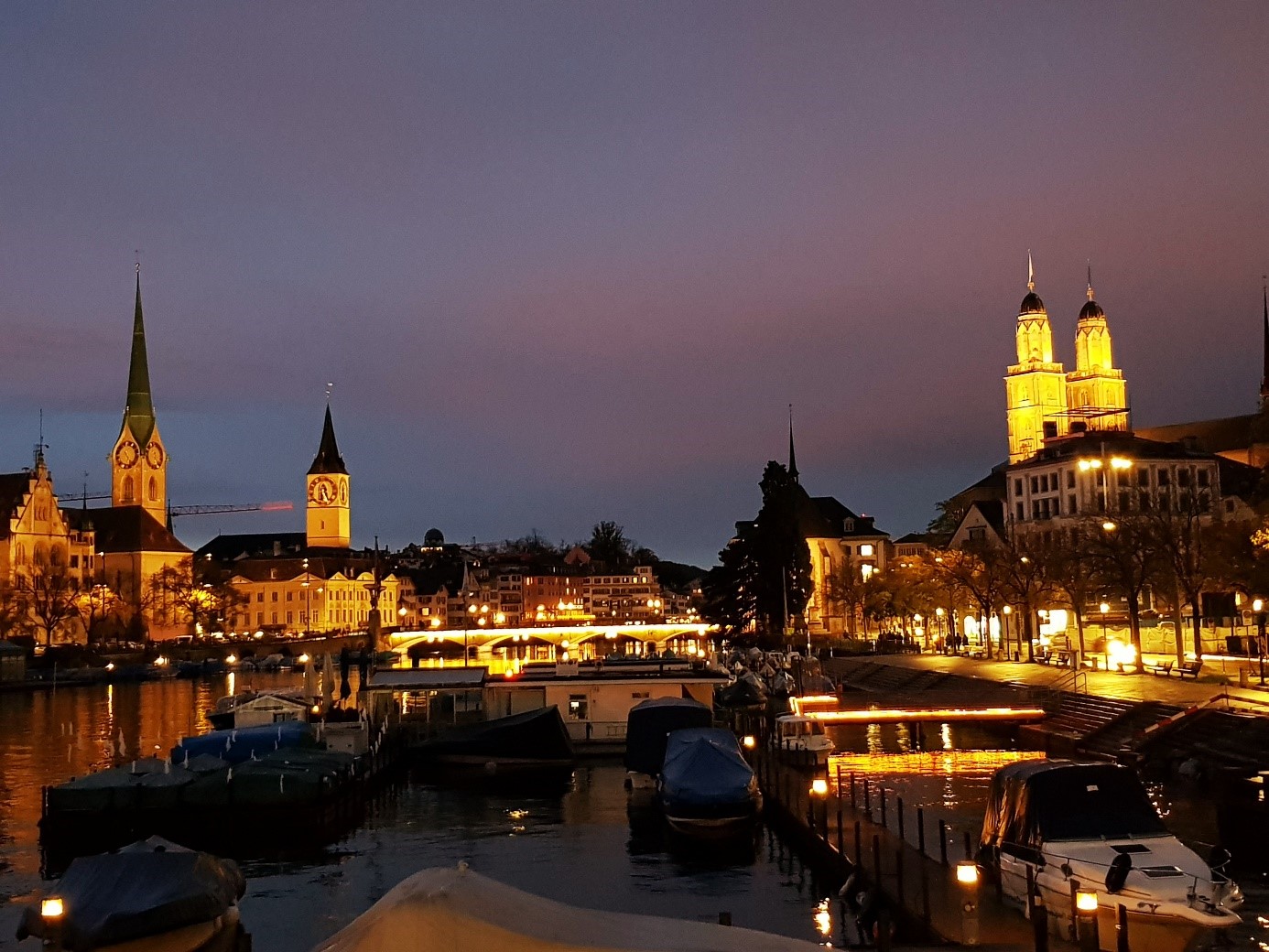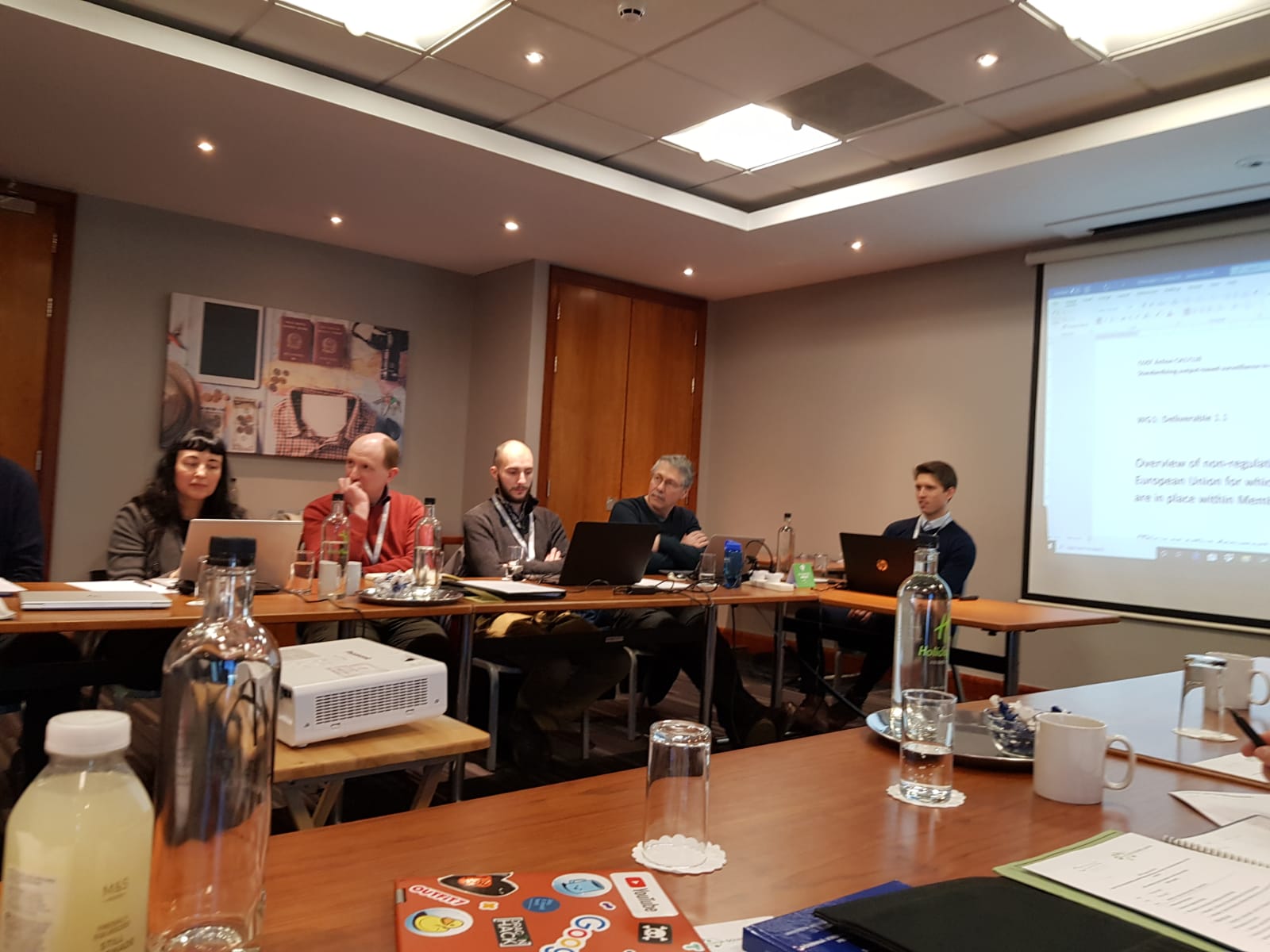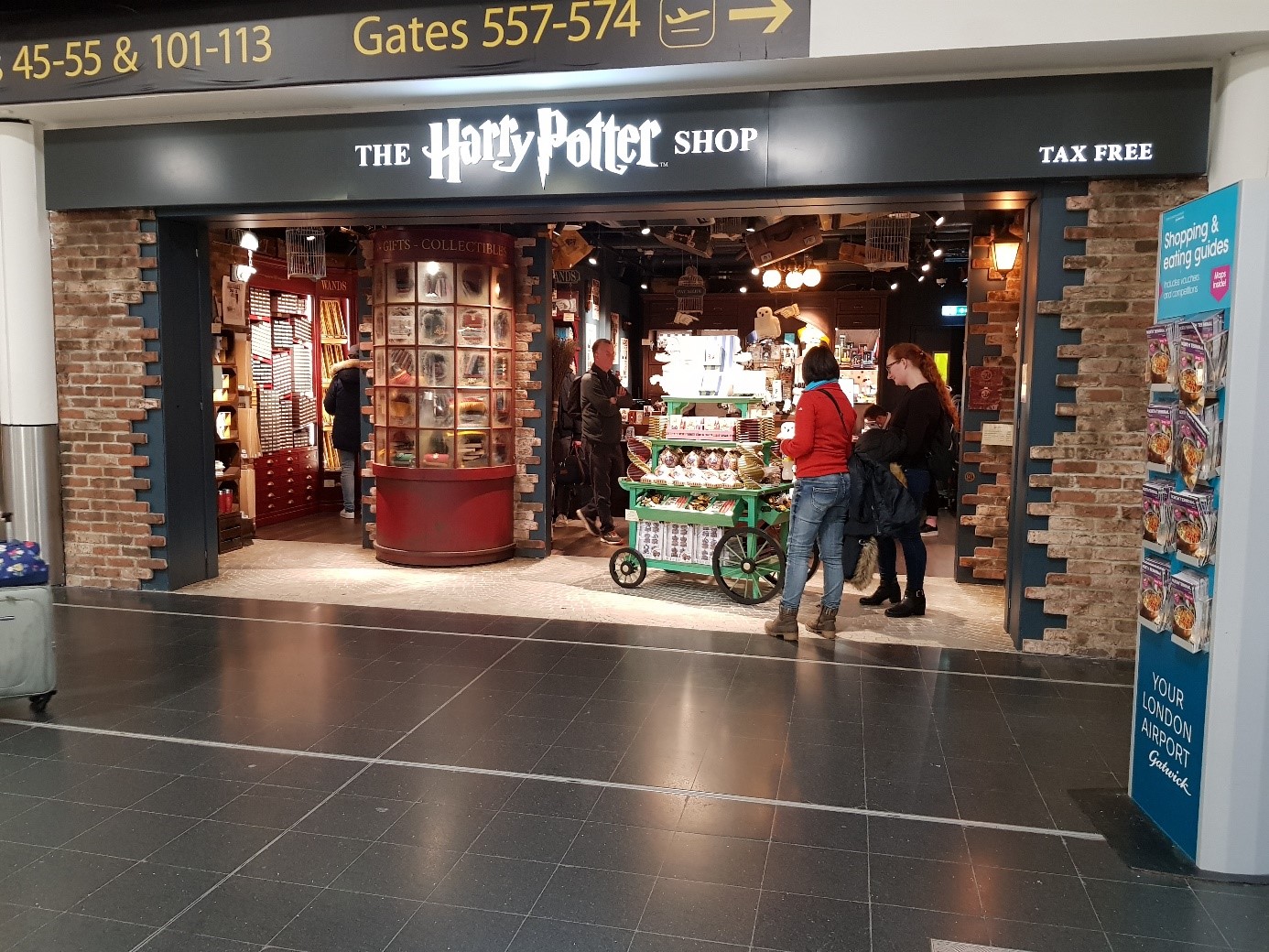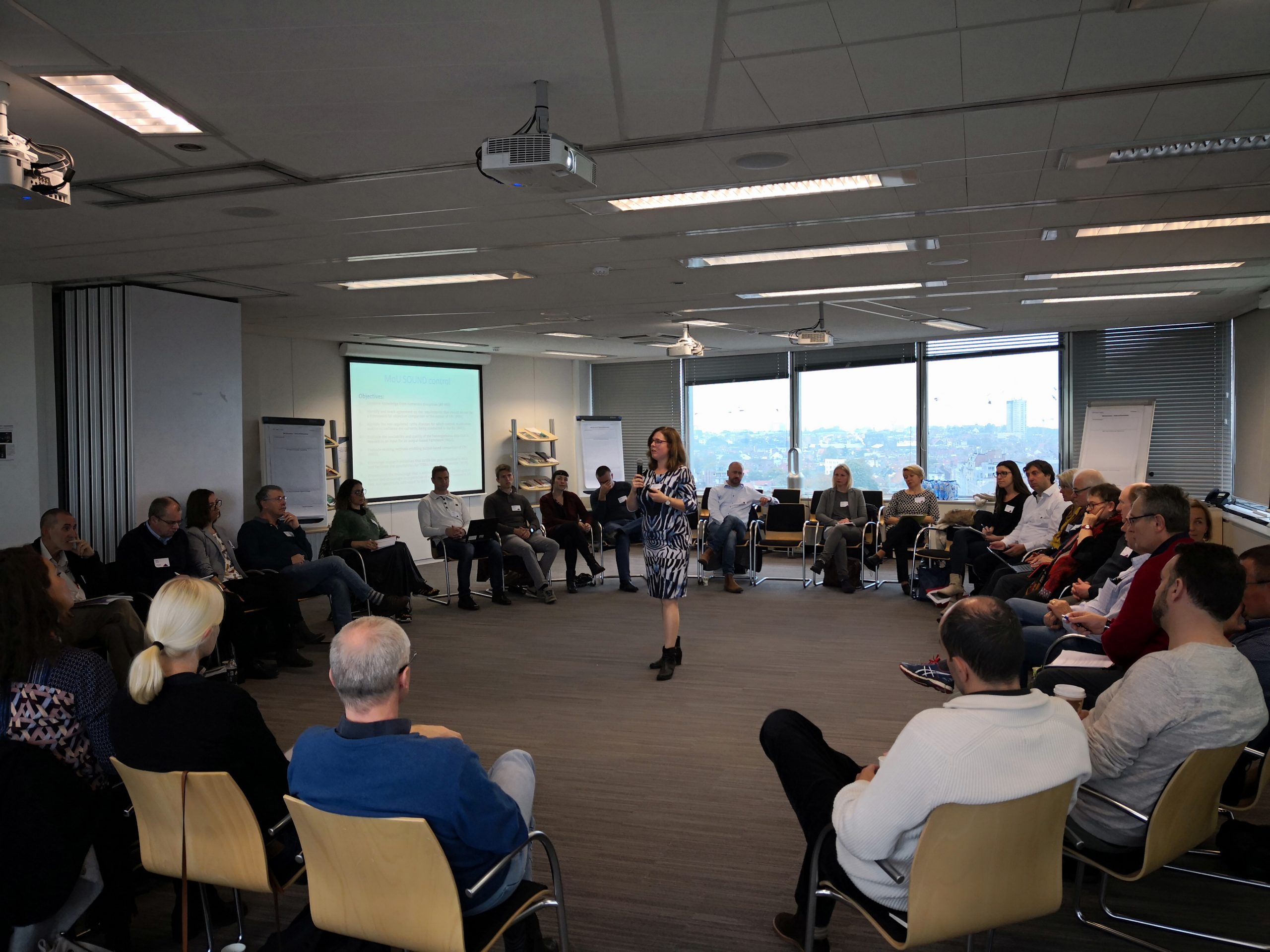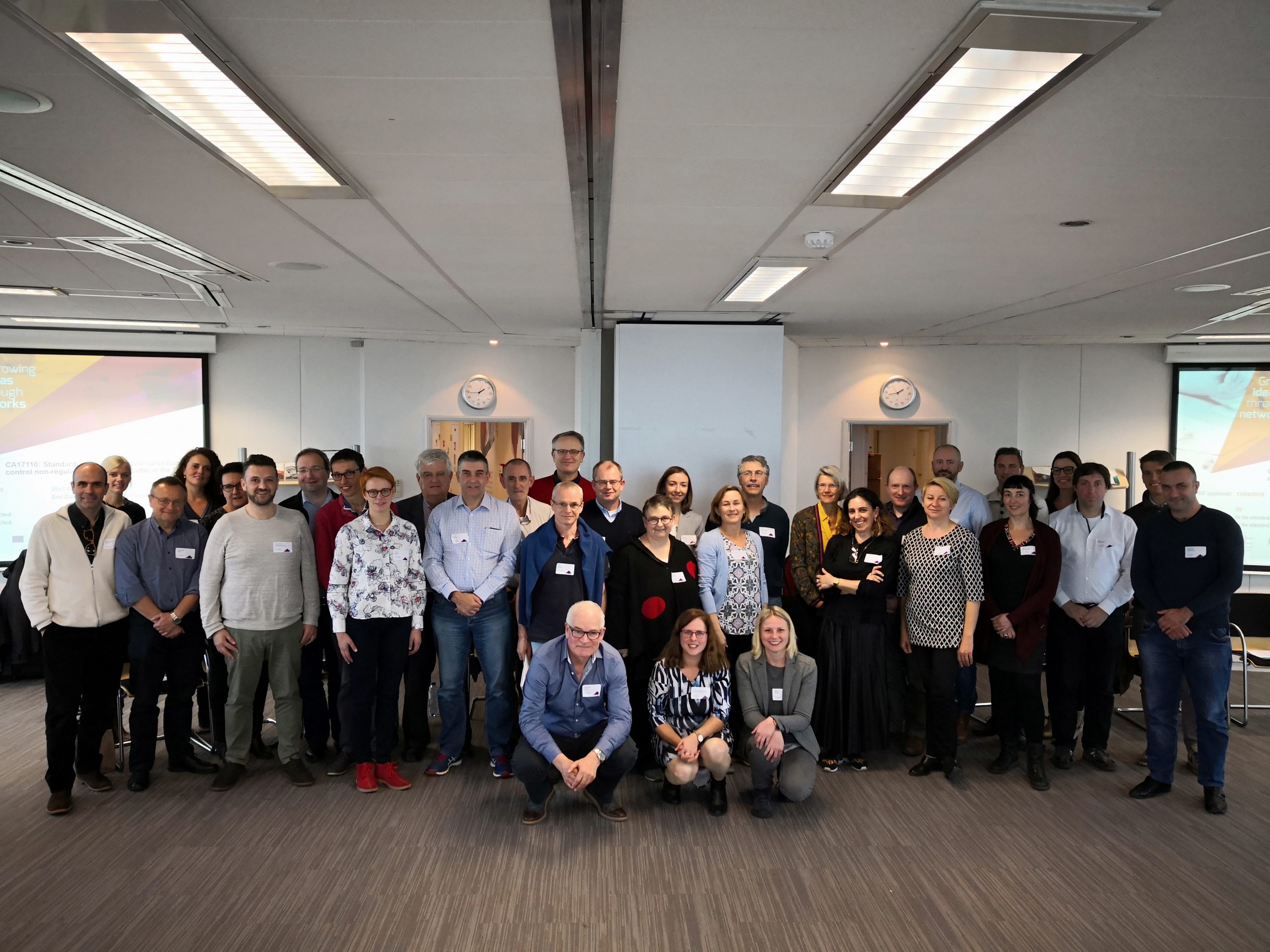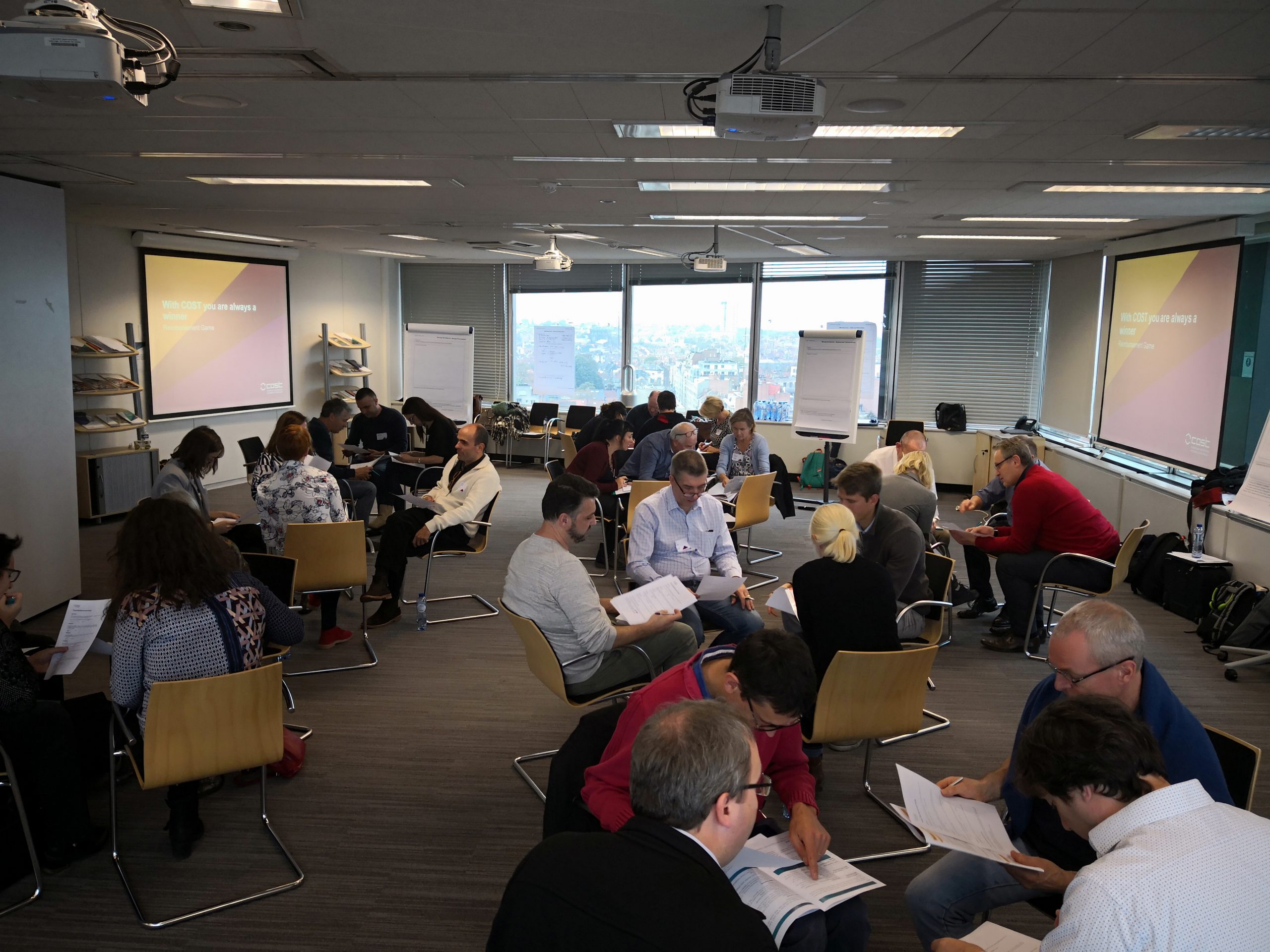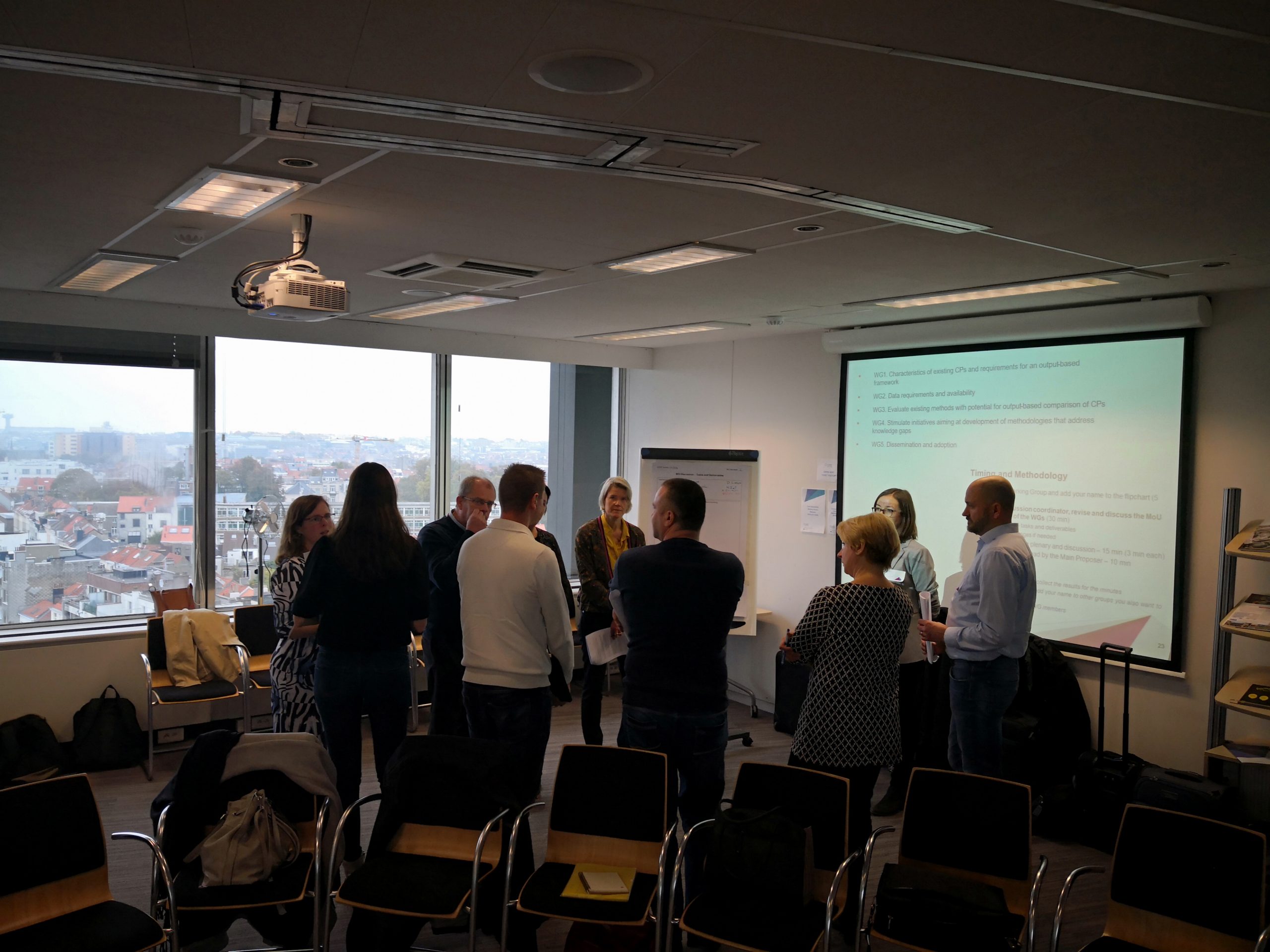Meetings & Events
Upcoming Events
30 January 2023 at 1 pm CET, Final SOUND control webinar by Inge Santman-Berends
COST Action SOUND control ended on 29 October 2022. In this final webinar, the chair of COST Action will present an overview of the project’s objectives, outcomes and achievements.
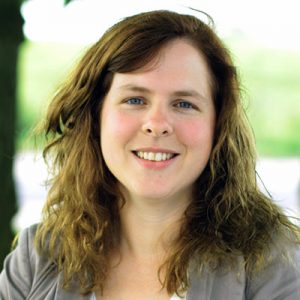
Past Events
On 19 and 20 September, a very well organized final SOUND control conference was held in beautiful Athens, Greece. With more than 50 participants from 20 countries being in Athens and an additional 12 people participating online, this final conference was a successful closure of a very fruitful Action in which a sustainable network was developed. By coming to Greece many participants returned from a full Autumn experience in their own countries back to the summer for a few days and the atmosphere was accordingly relaxed and enthusiastic. The latter was of course also due to the fact that everyone was enlightened that we were finally able to meet in person again and to have one last meeting together.
Given that most COVID-19 restrictions were lifted in the beginning of 2022, there were many SOUND-control activities in this final year where people were able to visit each other and work together on topics related to output based surveillance. This resulted in a large number of presentations of STSMs and VMs with many interesting new results. Besides these interesting added outputs, each of the WG leaders presented their final deliverables and we are very proud that even with all the challenges we were able to deliver what we promised.
In addition to the scientific programme, the terrific Local Organizer’s team had organized a mutual social dinner where we could taste original Greece dishes accompanied by a beautiful environment, some local Greece music and good company from each other. All in all, we can conclude that SOUND-control had a very successful closure conference meeting.
Part of the results that were presented these days can also be found on our deliverable page, so make sure to have a look.
The webinar about the Global Burden of Animal Diseases programme was presented by Jonathan Rushton. Jonathan Rushton is an agricultural economist who specialises in the economics of animal health and food systems.
About the GBADs programme: Livestock health and productivity are negatively impacted by the presence of endemic and emerging diseases, increasing the amount of resources needed to maintain these animals, which in turn increases competition for land, air and water. In response, hundreds of millions of dollars are invested globally on disease mitigation in order to improve livestock health and productivity, yet a systematic process to determine the burden of animal disease on the health and wellbeing of people is not available. It is unknown how the burden is apportioned between smallholders and the commercial sector, by region and gender. Consequently, decision makers lack the information to accurately assess whether their investments target the animal health issues that have the most significant impact on human wellbeing.
For those who could not attend and are interested in this webinar: The presentation was recorded and can be found on our SOUND control youtube channel :
In June 2022, twenty participants attended the 3-day training school on scenario tree modelling (STM) in Ljubljana. The aim of STM is to quantitatively analyse multiple complex components of disease control programmes and to use multiple data sources to estimate the probability of freedom from disease.
The course instructor was internationally renowned epidemiologist Angus Cameron, Director of AusVet Animal Health Services. He introduced the concept of STM and took the participants step by step through the development of the model and shared his extensive practical experience in applying the models. Angus paid particular attention to the interests of each participant, which made the training school an exceptional experience, perfectly summed up by one participant’s feedback: “Fantastic lecturer that made the stuff look simple and brought enthusiasm and heavy brain activity among the participants.” There were also many practical examples where Angela Fanelli stepped into action and helped participants who were stuck. She also presented some of her own work on STM.
After the full-day course, we met for a boat trip on the Ljubljanica river, a ride on the electric train through the main sights of Ljubljana and joint dinners.
The webinar about COST Action BETTER was presented by Alberto Allepuz. Alberto is a veterinary epidemiologist working at the Department of Animal Health and Anatomy of the Autonomous University of Barcelona, in Spain.
Biosecurity is limited by different factors such as i) lack of knowledge on ways for improvement, especially in extensive systems or settings with low resources; ii) shortage of adequate ways to enhance communication; iii) diversity of methodologies to assess and measure the implementation of biosecurity measures and their cost-effectiveness and iv) low number of trained professionals. To approach these challenges, a new COST Action (https://better-biosecurity.eu/) on biosecurity was launched in October 2021. The webinar will present the structure and objectives of the project, together with the planned activities and opportunities for collaboration and involvement.
For those who could not attend and are interested in this webinar: The presentation was recorded and can be found on our SOUND control youtube channel :
The webinar on the topic of the DECIDE project was presented by Gerdien van Schaik. Prof. dr. Gerdien van Schaik is the coordinator of the DECIDE project, works at Royal GD and holds a chair at the Faculty of Veterinary Medicine of Utrecht University in ‘monitoring and surveillance of animal health’. She is a quantitative epidemiologist with a master and doctorate degrees in animal sciences and animal health economics from Wageningen University.
The DECIDE project will develop data-driven decision support tools, which present (i) robust and early signals of disease emergence and options for diagnostic confirmation; and (ii) options for controlling the disease along with their implications in terms of disease spread, economic burden and animal welfare.
DECIDE will focus on respiratory and gastro-intestinal syndromes in the three most important terrestrial livestock species (pigs, poultry, cattle) and on growth reduction and mortality in salmonids, important aquaculture species. For each of these, we will (i) identify the stakeholder needs; (ii) determine the burden of disease and costs of control measures; (iii) develop data sharing frameworks based on federated data access and meta-information sharing; (iv) build multivariate and multi-level models for creating an early warning system. Together, all of this will form the decision support tools to be integrated in existing farm management systems wherever possible and to be evaluated in several pilot implementations in farms across Europe.
The results of DECIDE will lead to improved decisions on disease control to increase animal health and welfare and protect human health and the food chain in Europe and beyond.
For those who could not attend and are interested in this webinar: The presentation was recorded and can be found on our SOUND control youtube channel :
The webinar about COST Action HARMONY was presented by Polychronis Kostoulas. Polychronis is an Associate Professor of Epidemiology and Artificial Intelligence with a research focus on BLCMs for evaluation of diagnostics, true prevalence estimation, proof of disease freedom and early warning systems.
Epidemiological studies assessing disease prevalence are critically important to both the identification and control of pathogens in humans and animals (including zoonosis and food borne outbreaks). However, countries typically collect data in a way that is best suited for their specific needs, and non-standardized sampling strategies and diagnostic methods produce prevalence estimates that cannot be directly compared. Hence, the need for harmonization, which has been often highlighted in reports of relevant EU institutions, like the ECDC and EFSA. Despite the availability of appropriate statistical methods – Bayesian Latent Class Models (BLCMs) – that adjust for the imperfect accuracy of the diagnostic process and produce comparable prevalence estimates, the number of research studies and scientific reports that use them is small compared to the number of instances that use of such methods would have been optimal. The objective of HARMONY is to coordinate and promote the implementation of BLCMs through networking and knowledge transfer between BLCM experts and researchers working in statistics, epidemiology, diagnostics and population health.
For those who could not attend and are interested in this webinar: The presentation was recorded and can be found on our SOUND control youtube channel :
The webinar “The new Animal Health Law and it’s implications for List C, D and E diseases: focusing on BVD and IBR” was presented by Maria Guelbenzu. Maria is Animal Health Ireland’s Programme Manager for the BVD and IBR programmes. She has experience in the diagnosis and surveillance of large animal diseases and in the development and implementation of disease control programmes.
In this webinar, she presented the new European Animal Health Law which came into force in April 2021 and includes diseases in categories C, D or E, which were not previously regulated at EU level. Although EU countries are not obliged to control diseases in these categories, many of them are already implementing control programmes to control them. Maria Guelbenzu described the diseases involved and the impact of the different categories. Using BVD and IBR as examples, she elaborated on the impact these regulations can have on programmes that want to be recognised at EU level.
A total of 58 people followed the live webinar. The webinar is now available on our YouTube channel.
On December 1st, we organized a webinar on an Agent-Based Model for Bovine Viral Diarrhea presented by Jörn Gethmann (Friedrich-Loeffer Institut, Federeal Research Institute for Animal Health, Germany) and Jason Bassett (Max Planck Institute for Human Development, Germany).
In Germany, a nationwide compulsory program to eradicate Bovine viral diarrhea (BVD) is in force since January 2011. As it is associated with substantial expenditures, the speakers of the webinar developed an individual based model to simulate several disease control options (scenarios).
In this webinar they presented the general approach of individual based models and the use case for BVD. The presentation focussed on animal health economics related to disease control.
For those who could not attend and are interested in this webinar: The presentation was recorded and can be found on our SOUND control youtube channel and is accessible through the following link:
On November 9-10, 2021, the SOUND control consortium hosted an Annual online meeting to discuss the status and progress of the project. The first day of the annual meeting was filled with presentations from five working groups (WG) to discuss the latest progress of each WG. Two of these presentations are publicly available on our YouTube Channel:
- “Output-based methodological approaches” by Aurélien Madouasse & Eleftherios Meletis
- “A data collection tool for input data to model the freedom from diseases” by Madalina Mincu
On the second day, the Management Commitee reviewed the different activities since the beginning of the Grant Period 3, and discussed the planification of our next Grant Period.
After the Management Commitee meeting, 7 speakers participated in the SOUND control Annual meeting pitch presentation activity. It consisted of a series of presentations on different topics about cattle disease control programmes in different European countries. Presentations are available publicly here and on our YouTube channel.
On September 14, we organized a webinar on animal health economics presented by Dr. Wilma Steeneveld from Utrecht University in the Netherlands. Wilma Steeneveld grew up on a dairy farm and graduated from Wageningen University in 2006. She did her MSc thesis in the field of animal health economics (the economic consequences of treating subclinical mastitis during lactation). From 2006 to 2010 she did her PhD research at the Faculty of Veterinary Medicine on the detection of clinical mastitis with automatic milking systems. Subsequently, she worked for 5 years as a PostDoc researcher at the chair group Business Economics of Wageningen University. During that period, her research focused on the economic consequences of the use of sensors (e.g. activity meters) at dairy farms. Since 2015, Wilma is an assistant professor at the Faculty of Veterinary Medicine. She teaches and conducts research in the area of animal health economics and the use of sensor data to improve cow health at dairy farms.
In this webinar she focused on why performing economic calculations in support of animal health in dairy herds is of added value. After a more general introduction, she presented the results of economic studies conducted in the Netherlands on the topic of mastitis, which is the most important production disease in dairy cattle worldwide. The webinar was very successful with more than 40 participants from all over Europe.
For those who could not attend and are interested in this webinar: The presentation was recorded and can be found on our SOUND control youtube channel and is accessible through the following link:
On June 22-23, 2021, the SOUND control consortium hosted an Annual online meeting to discuss the status and progress of the project. More than 40 members from 32 SOUND control countries attended the event.
The first day of the annual meeting was filled with presentations from five working groups (WG) to discuss the latest progress of each WG. On the second day, after the Management Committee meeting, 9 speakers participated in the SOUND control Annual meeting pitch presentation activity. It consisted of a series of presentations on cattle disease control programmes in different European countries. For members of SOUND control, links to all presentations are available on our internal website and on Slack. Publicly available presentations can be found here and on our YouTube channel.
The webinar “The STOC free model: A Bayesian Hidden Markov Model for output-based surveillance” was presented by Aurélien Madouasse. Aurélien graduated in veterinary medicine in Nantes (France) in 2006 and obtained his PhD in mastitis epidemiology in Nottingham (UK) in 2010. Since 2012, he has been working as an associate professor of epidemiology and cattle population diseases in Nantes on syndromic surveillance using production and reproduction data for the detection of emerging cattle diseases. In this webinar, he presented the work carried out for the STOC free project. Namely, the modelling hypotheses of the developed STOC free model, the model implementation and the application to data from the BVD control programme.
The recoding of the webinar is available here.
On 30th April 2021 a webinar on storytelling was organised and all SOUND control members were invited. More than 30 attendees from a variety of European countries participated. The aim of this webinar was to encourage SOUND control members to present the Action and results to the stakeholders in their own language in order to reach as many relevant people as possible.
The webinar was based on the COST Academy training, “Storytelling: spotting and writing a good story. Getting people to listen “by Dr Jon Copley. In this webinar tips and tricks how to write a short and effective article about a SOUND control topic for non-experts (e.g. farmers, field veterinarians) was presented. An introduction to using SLACK for better communication in the Action was also presented.
The recoding of the webinar is available here.
The webinar “Evaluation of surveillance systems” was presented by Marisa Peyre. Marisa is an epidemiologist specialized in the evaluation of animal health surveillance and control programs. She works as a senior epidemiologist and economist and is deputy head of the research unit ASTRE at CIRAD (French Agricultural Research Institute for Development). She has been working for CIRAD since 2006 and is currently based in Vietnam, where she carries out researches at the regional level in the field of evaluative epidemiology. She is a professional trainer in participatory epidemiology and the evaluation of health surveillance systems to improve animal health management strategies in South East Asia and in Europe. The work she presented in this webinar was part of the work she conducted for the RISKSUR project.
A total of 76 people watched the live webinar. The webinar is now available here.
The first training school titled “Basic concepts in epidemiology and surveillance” was conducted as an online event on February 1 and 2, 2021. The training was coordinated by Maria Guelbenzu (IE) with technical support from Tanja Knific (SI). Maria, Tanja, Jörn Gethmann (DE) and John Berezowski (CH) acted as trainers and were supported by Carola Sauter (DE) and Inge Santman (NL).
In total, 24 trainees from a variety of European countries participated in the training school. The training school consisted of a combination of lectures, Excel exercises, MentiMeter surveys, ZOOM surveys and break-out discussion sessions.
The first day covered topics such as disease measures, risk analysis, diagnostic test characteristics and sample sizes. The second day was devoted to monitoring and surveillance and risk-based surveillance.
All material presented at the training is available here.
On 9 and 10 December our annual COST event was organized. Due to the COVID-19 pandemic we were forced to move the meeting from Greece to online. On 9 November we started with a meeting for the core group members. Thereafter, an interesting programme was offered to all members of SOUND-control in which they received an update of the different working groups. More than 55 participants were present to learn about the project and how it evolved.
For working group 2 a detailed presentation was provided in which Eglė Rapaliutė presented the results of her STSM on the evaluation of available data on cattle demographics and disease control programmes in all 32 participating countries in the Action. In addition, an invited speaker, Gabriele Zancanaro from EFSA, presented the results of the SIGMA project. Gabriele informed us about the progress of this project in which they aimed to standardize and increase the quality of the data that is submitted to EFSA while minimizing the workload of the data providers.
At the end of the day a MentiMeter questionnaire was provided to the participants. Overall the day was found to be very interesting, although it would have been better to have been able to meet in real life.
Several ideas were offered for organizing online activities in the current situation in which we are not able to physically meet, which are presented below. On 10 November all MC members participated in the online MC meeting in which the management related to the Action was discussed, the challenges that we face and the solution that we propose.
Overall, we were happy how this online event went and decided that this is a good alternative to keep our project going in the situation where it is impossible to meet. Hopefully our next meeting can be organized face-to-face, otherwise, we will continue in this format as long as needed.
An additional WG1 meeting was organised in London on 6 March 2020 in which we discussed the results so far and the planning for the rest of the work.
For this WG there were already two deliverables that are finished:
D1.1 an overview of cattle disease status and the control programmes in place in Europe. This is a live document that is continuously updated during the Action. The most recent results were shared and people provided feedback that will be incorporated in the next version.
D1.2 includes a large list with relevant organisations for this COST Action in each of the participating countries. Personal contact details were removed from this list in agreement with the MC given the new European GDPR regulations on privacy. The list is published on the website and Jaka-Jakob Hodnik will also keep this list up to date during the lifetime of this Action.
For D1.3 “the narratives on disease control programmes” the format and planning was discussed and Jaka-Jakob presented the results of his STSM in which he wrote the narratives for the United Kingdom and for Slovenia.
Besides WG1, the members from WG2 and WG4 also shared a short update on their progress and asked for some feedback from the WG1 group.
A one day WG4 workshop was dedicated to answering the question: What information is needed to make a decision about importing cattle for disease in which non-standardized surveillance is in place? Different scenarios were explored, where importing and exporting countries could claim that they (the whole country or region) were free from a certain disease (BVD, IBR or paratuberculosis) or not. Participants worked in large and small groups to create the lists of needed information which we then presented and discussed by the whole group. We divided the needed information into groups of data on animal, herd, regional or country level, diagnostic tests, laboratories, responsible institutions and surveillance programme design. We agreed that the underlying issue in making such decisions is trust in the available data which is very hard to incorporate in a mathematical model. In addition, the information needs were ranked considering their relevance.
The next step is to compare this information with the information that is created in WG1 and WG2 and to identify the aspects that are not yet included in existing methods and control programmes.
Main topics at the CG meeting were plans for grant period 3 and organization of upcoming events. The next big SOUND control event with MC, CG and WGs meetings as well as training school are planned early June in Ljubljana, Slovenia.
In November 2019, the second larger COST event was organised in Zürich. In this two-day meeting we started with a Core group meeting in which we discussed the progress of the Action, prepared the management committee meeting that was planned for 5 November and discussed the plans for the third grant period. The rest of the day was dedicated to a WG2 workshop in which the first draft of the data-collection framework was presented together with the first test results of two extremely different countries (Netherlands and Albania) that attempted to fill the tool for their respective countries. The challenges were discussed and the participants were assigned to smaller discussion groups to discuss the contents of the data collection tools and to come up with possible solutions for the challenges that they encountered. In the afternoon session, the challenges and potential solutions were presented by each of the groups and discussed in a plenary session.
In the second half of the afternoon on 4 November a parallel WG4 and WG5 session was organised. In the WG4 meeting, the results of a STSM on sociology in relation to disease control programmes was presented by Marit Biesheuvel, who conducted this work during a one-month STSM in Nottingham under supervision of prof. Jasmeet Kaler. In the WG5 meeting the contents and planning for the first newsletter was presented and discussed and a time planning and allocation of the different tasks was made.
On 5 November, the morning session was dedicated to WG3. All participants were invited to this WG workshop and the possible methods usable in output based surveillance were presented. Eleftherios Meletis presented his findings that he obtained during a STSM in Nantes that was supervised by Aurélien Madouasse and supported by dr. Petter Hopp. During this meeting also Bayesian Latent Class Models applied to outcome based surveillance and the STOC free methodology were presented to the group by Polychronis Kostoulas and Aurélien Madouasse. Additionally, WG3 presented the further methods that they wished to explore and their future planning for this GP. The COST event was ended with a management committee meeting in which the progress of the Action was presented together with its finances. The proposed activities and locations were discussed and we announced the planning for writing the work and budget plan for grand period 3 and when people could expect to have to deliver input. The meeting was closed thanking the Zürich team for doing a great job in organising the event.
During this meeting the members of WG1 met and discussed the first outcomes of the WG. In between the previous and this meeting, there were two STSM conducted as part of this WG. As result a first version of the first deliverable was drafted in which all cattle disease control programmes (CPs) were mapped that were conducted within the COST countries that participated in the Action. During the meeting it was discussed that these CPs are updated constantly and that the document with the overview which disease control programme are conducted in which country and the country specific disease status would be updated throughout this Action. The most recent version of this deliverable can be downloaded from the website. The second deliverable of WG1 involved creating a list with contact details of relevant organisations involved in control of endemic diseases in each of the participating countries. The first results were presented by the STSM candidate and difficulties in light of GDPR (law on privacy regulations) were discussed. It was decided that no personal email addresses would be added on the list but instead of that general emails of the companies.
The SOUND control event in the Netherlands was the first larger COST event within our Action. We started on Monday-morning with a large WG1 workshop where all participants were invited for. During this workshop the focus of our Action was discussed together with the definitions of a disease control programme, disease status of a country and the definition of the diseases that were eligible for inclusion in our COST Action: diseases not assigned a list A or B status in the new Animal Health Law. Additionally, the first results were presented and it was agreed to add more detail too the first preliminary results that would be added by the WG1 participants of all countries in the Action.
In the second half of the afternoon we proceeded with our first Management Committee meeting. During this meeting every WG leader provided a short overview on the progress of their WG and the plans for the coming period. Further, the overall management of the Action was presented including the decisions that were made by E-voting, all coordinating actions and the finances of the first grant period. The preliminary plans for the second grand period (GP2) were discussed and locations for the meetings in GP2 were chosen i.e. Inverness for a GP1 meeting, Zürich for the larger COST event and an additional WG meeting in Warsaw.
On the 26th were organised a parallel session for WG2 and 3 in the morning and WG4 and 5 in the afternoon. In the WG2 meeting, the results of the STSM conducted by Violeta Mũnoz were presented by dr. Hans Houe and there was a discussion on the plans to further develop a feasible data-collection matrix. In the WG3 meeting several methods that might be useful in output based surveillance were presented and discussed. The afternoon session for WG4 was used as a start meeting to develop and discuss plans on how to proceed with the work foreseen in this WG and WG5 discussed the contents of the preliminary communication plan.
In Porto we started with a short Core Group meeting to discuss activities that we were organising in the first grant period such as organising a few Short Term Scientific Missions (STSMs) and a big COST SOUND Control event on the end of March in Utrecht, the Netherlands. Additionally, the activities for the second grant period were discussed given that a work and budget plan had to be submitted and approved by COST that describes our planned activities.
In the WG1 meeting questions were discussed such as: which non-EU regulated diseases should be included in this project? It was discussed that we include all infectious cattle diseases not from the animal health law list A and B but for which there are collective control programmes in place in the Cost Action member country. There was already a first evaluation for which non-EU regulated diseases control programmes exist. The first results were discussed and it was agreed that all countries should provide additional information based on a pre-defined list of cattle diseases that meets the criteria that was discussed in this meeting.
At the end of the day there was a short interactive session with the members of WG5 in which we discussed the contents of a communication plan in which we discussed possible dissemination activities and provided input for the plan to the WG-leaders and co-leaders of the Action.
The kick-off meeting of the SOUND Control COST Action was on 29 October 2018 in Brussels. Our COST Action selected as one of the pilot groups which meant that we tried a different approach than ‘normal’ to get acquainted with the rules of regulations of COST and to discuss our Action. In general this meant that the day was very interactive starting with a short presentation of COST and the rules and regulations of participating in a COST action. This presentation was intermingled with short activities to get to know each other, to give the group a dynamic boost and a pop quiz to test if we really listened. One of the activities involved splitting the group into smaller groups and to let them discuss each of the working groups that were proposed for the Action. The people that indicated to be interested in a leader or co-leader position before the start of the Action were asked to lead the discussion and to present the outcome. During the afternoon session, first the group voted for the Grant-Holder institution, the chair, vice-chair, STSM committee, Science Communication Manager, and the WG-leaders and co-leaders (the result of this voting can be found on this website). Thereafter the elected chair presented the contents of the project which can be found in the MoU of our project that can be found and downloaded from this website and discussed the actions to be taken for the next meetings that will be organised during the first grant period.
See what’s next


